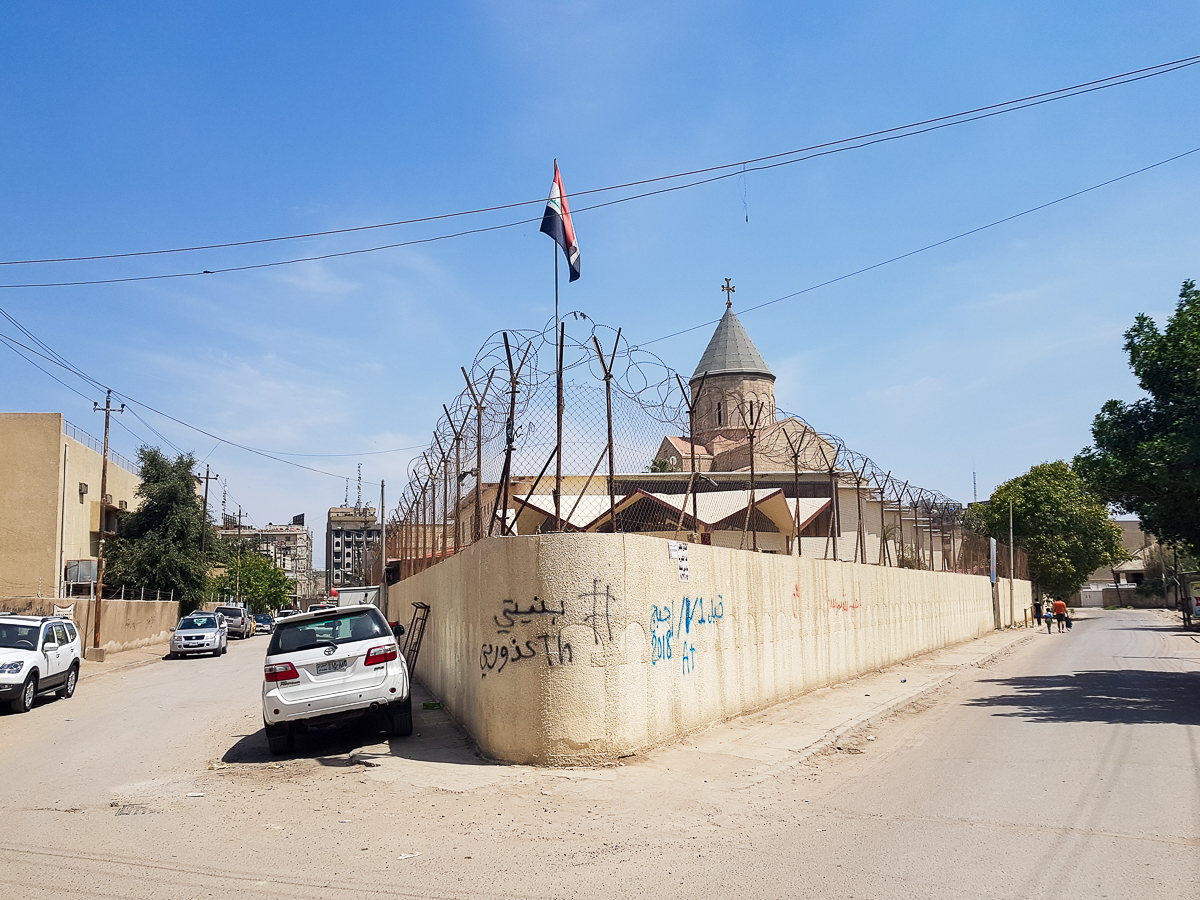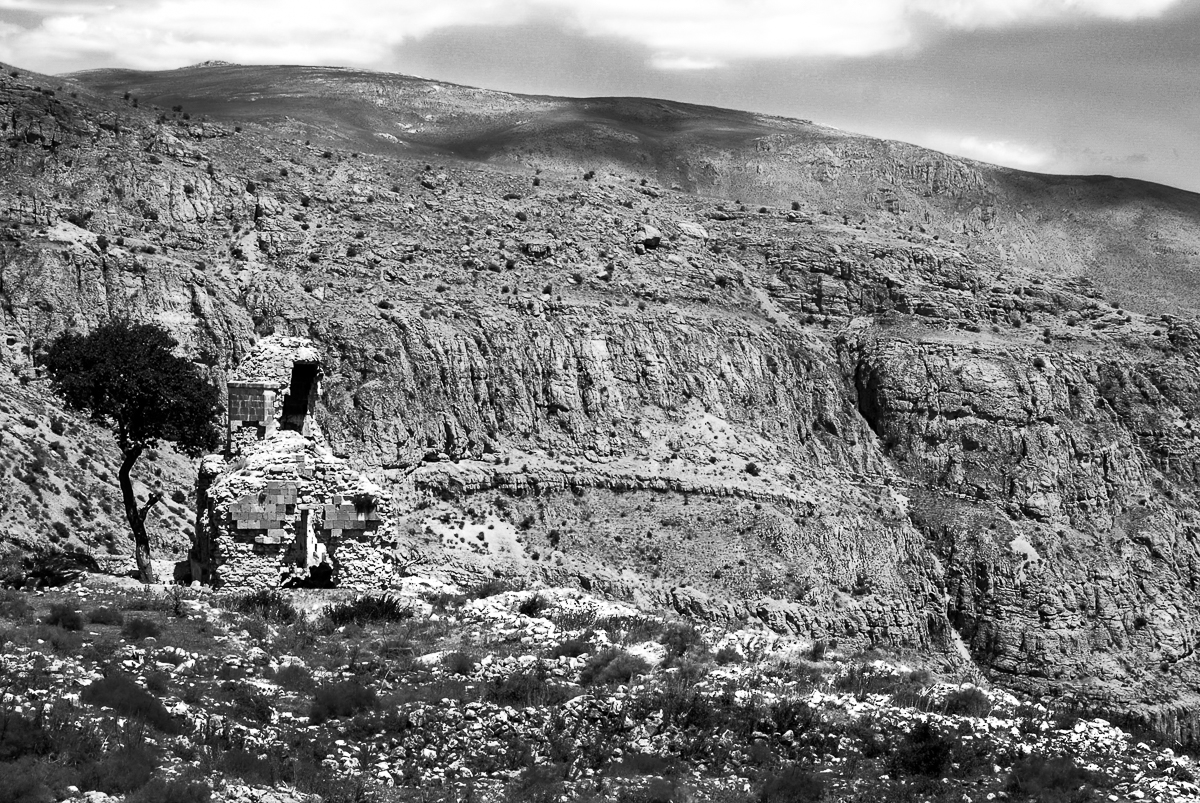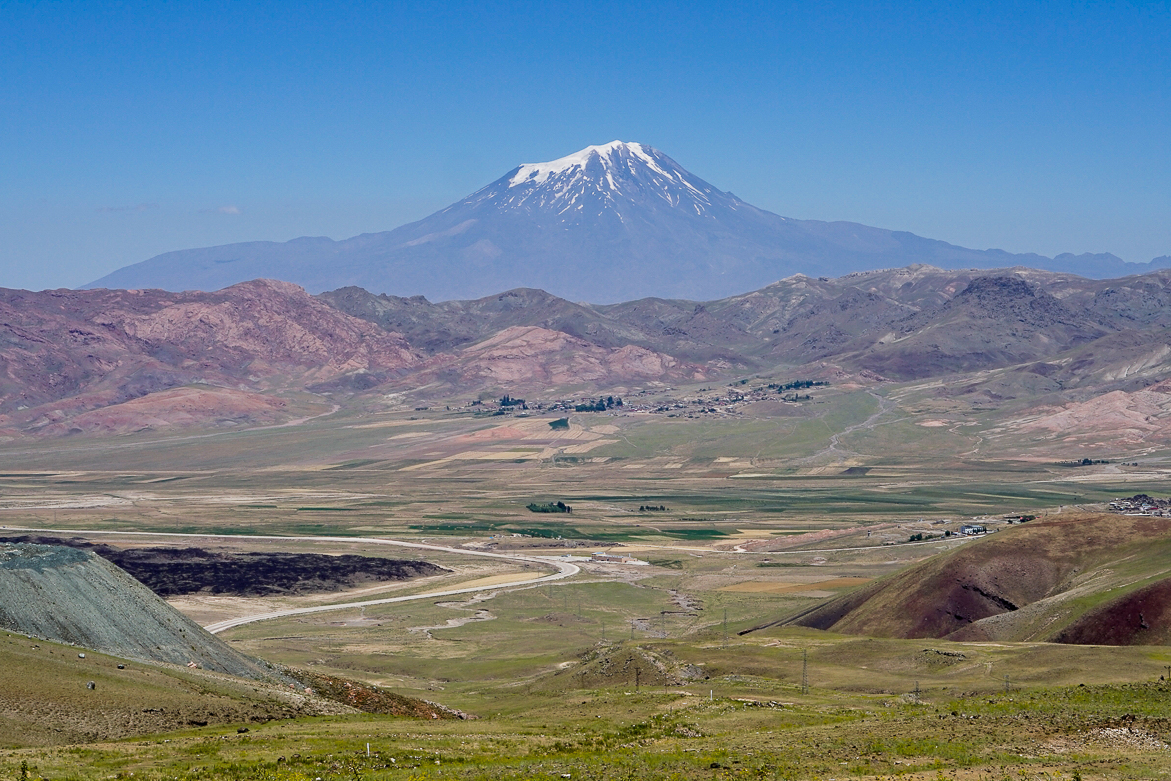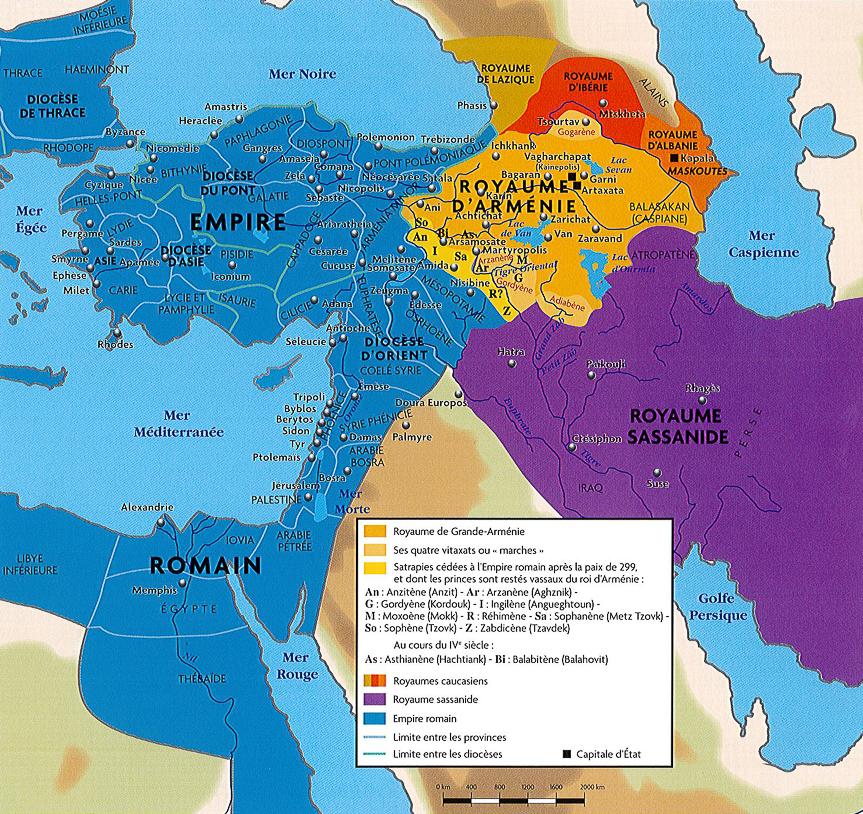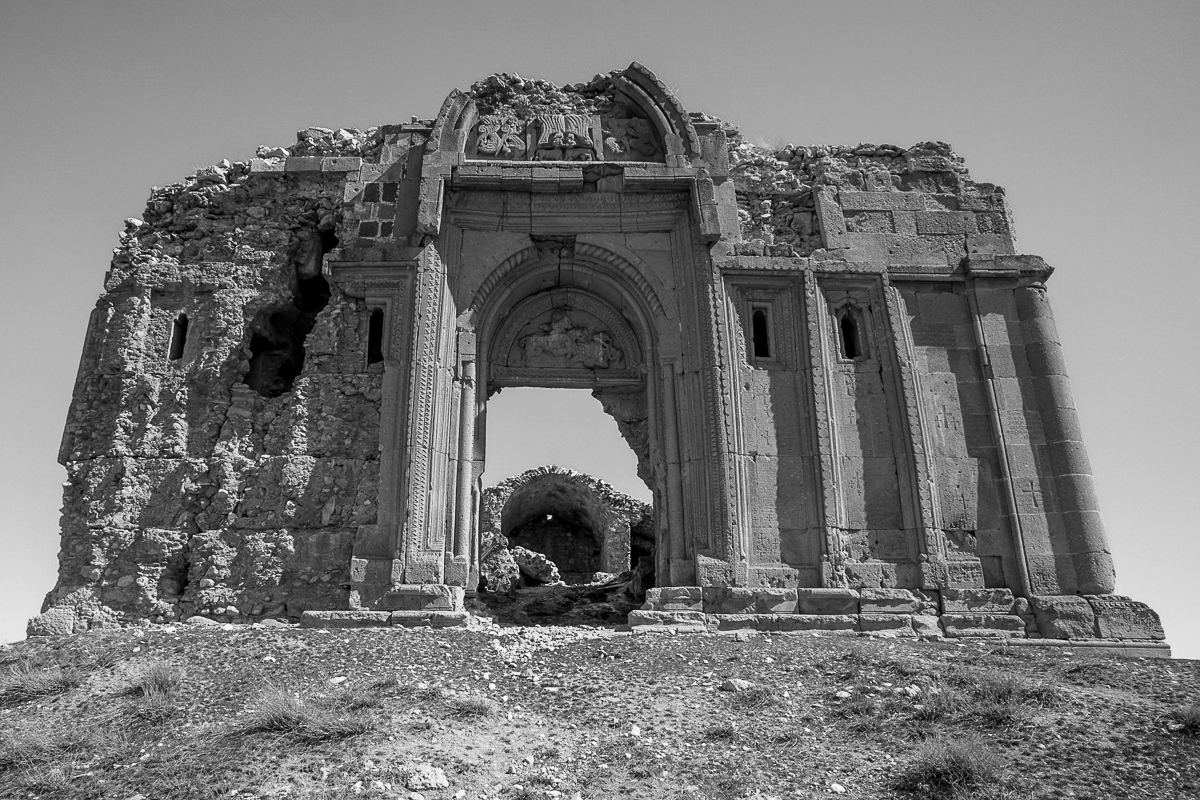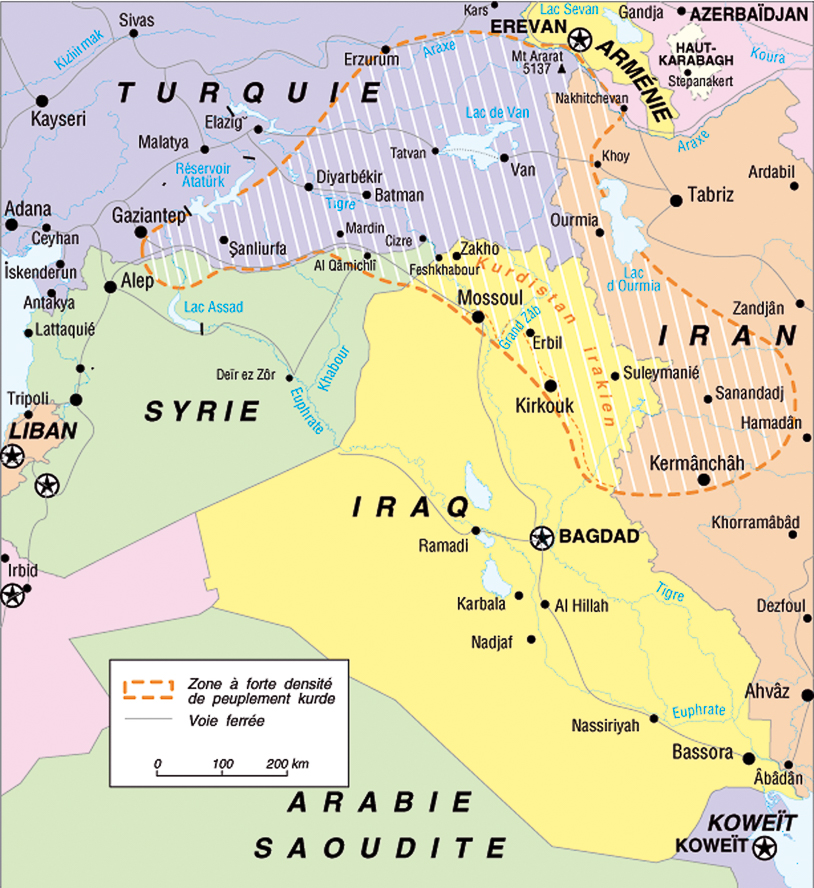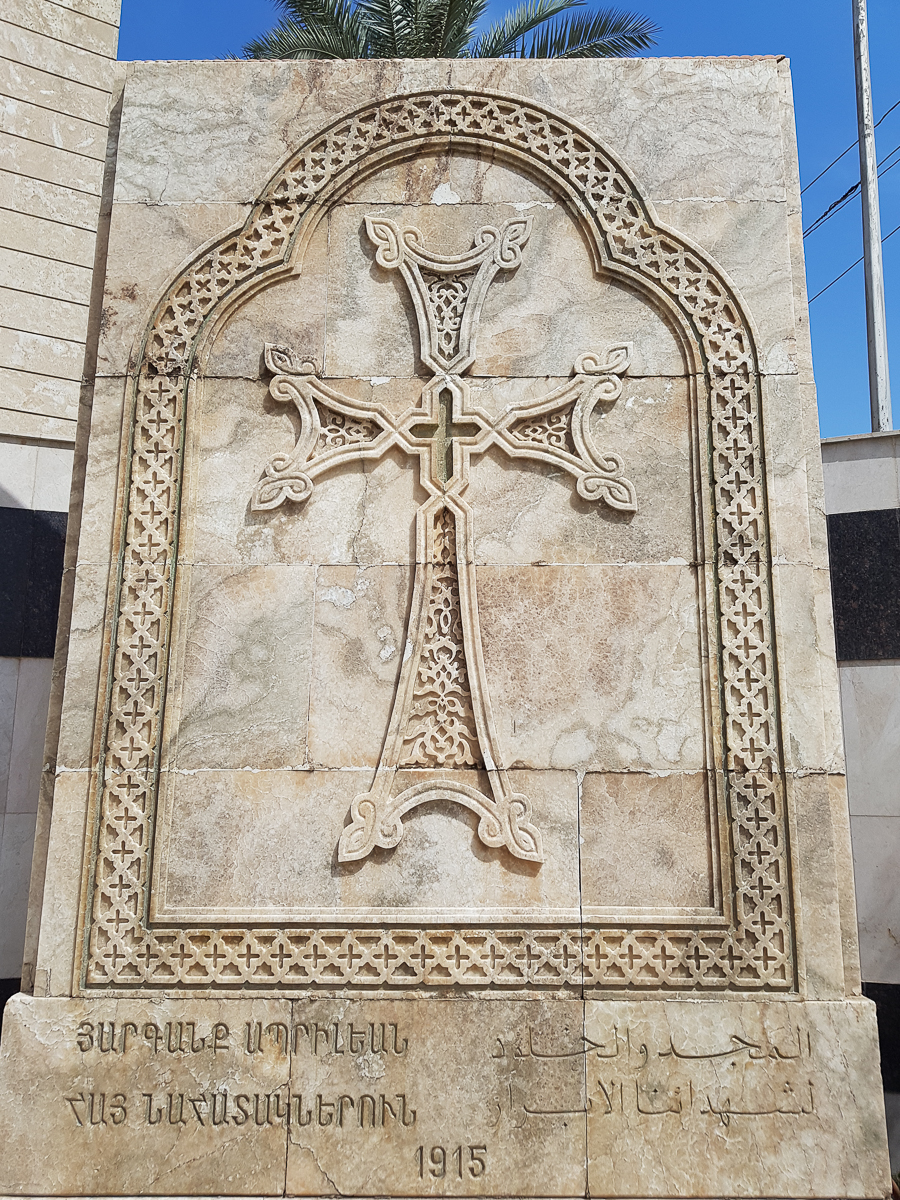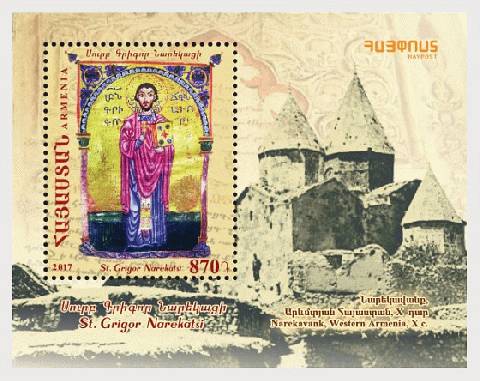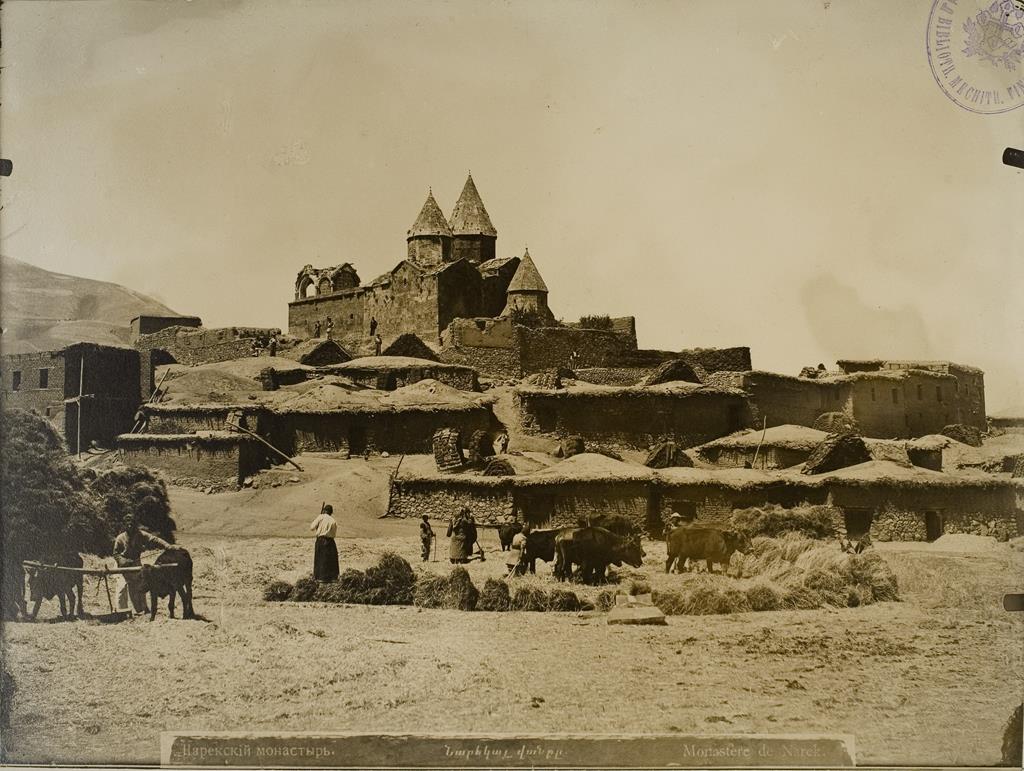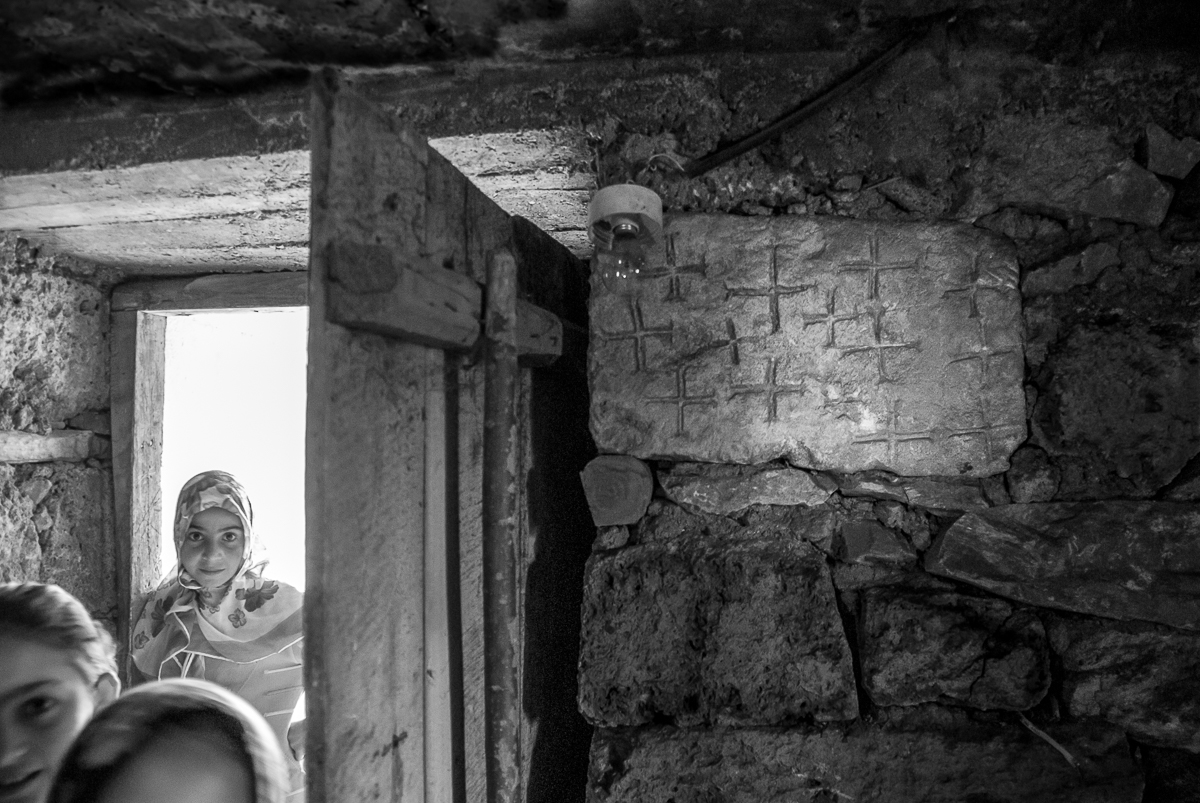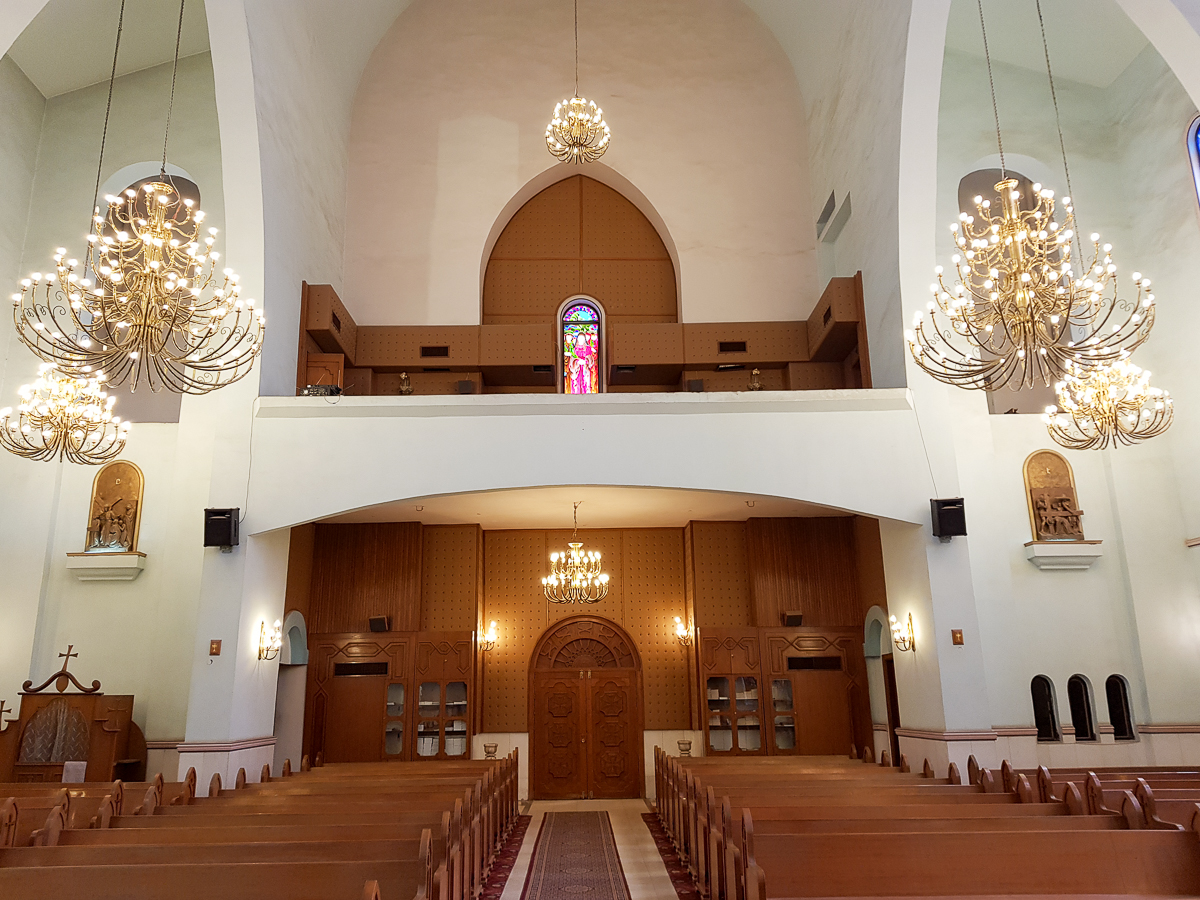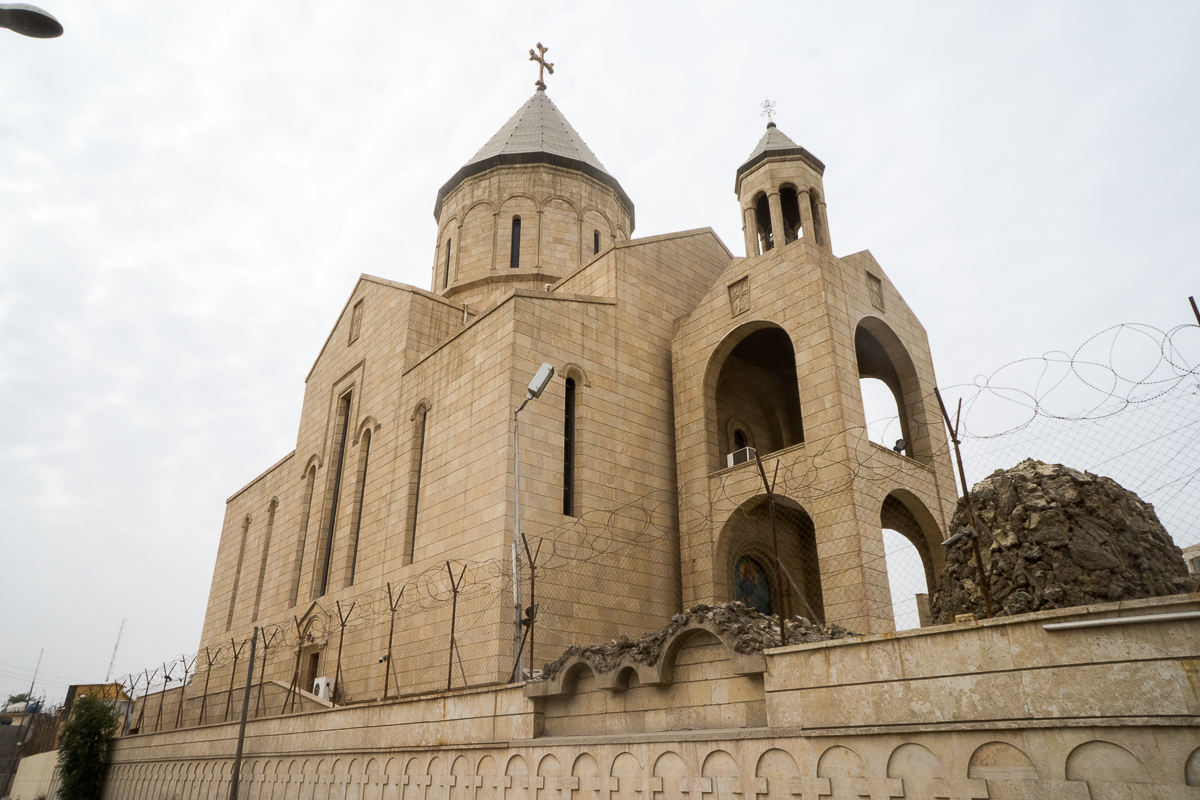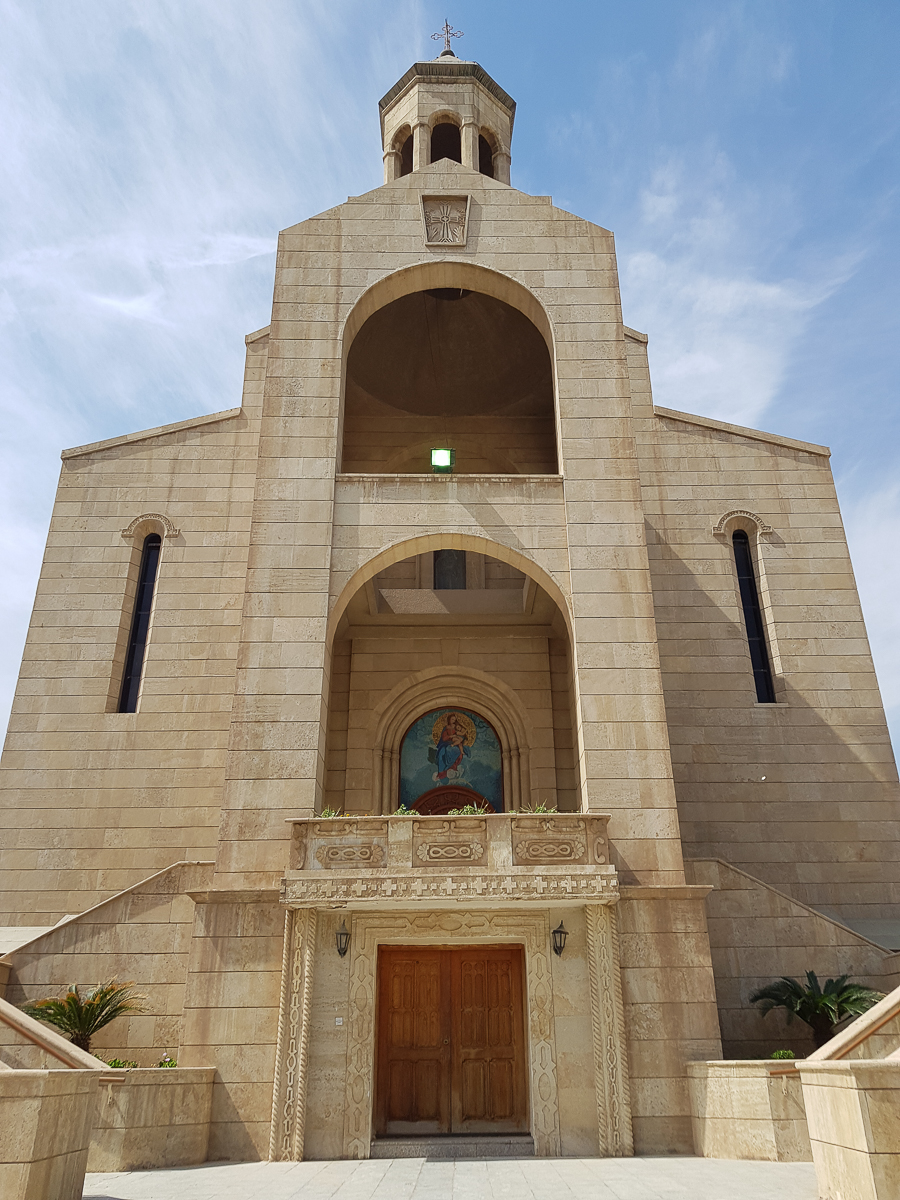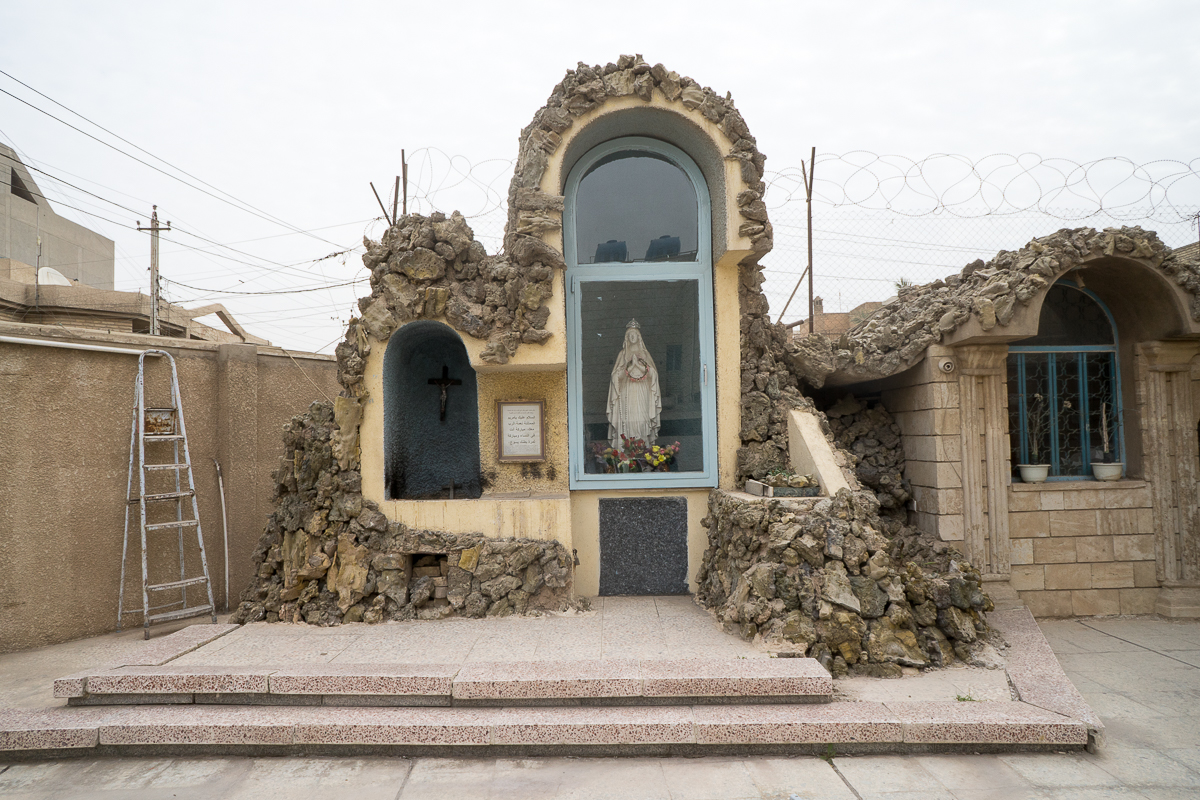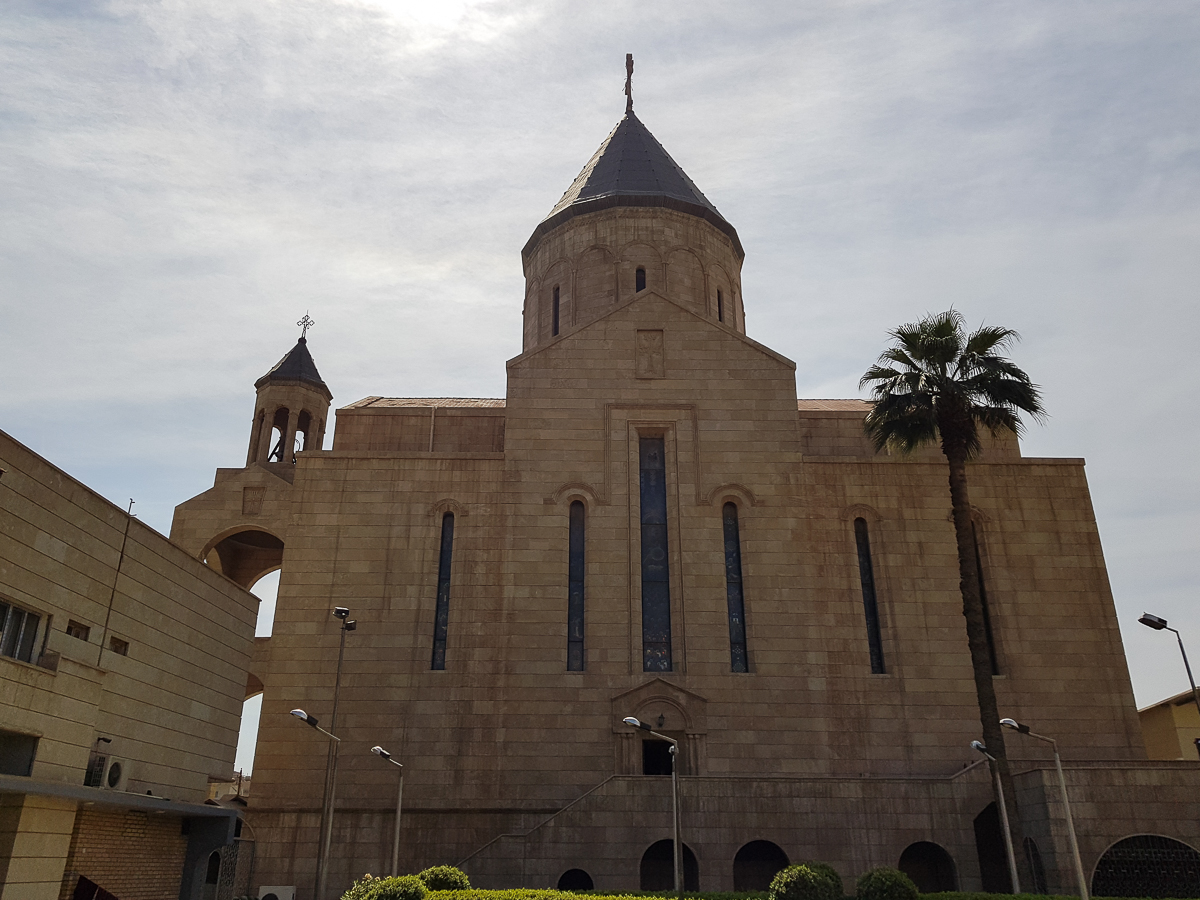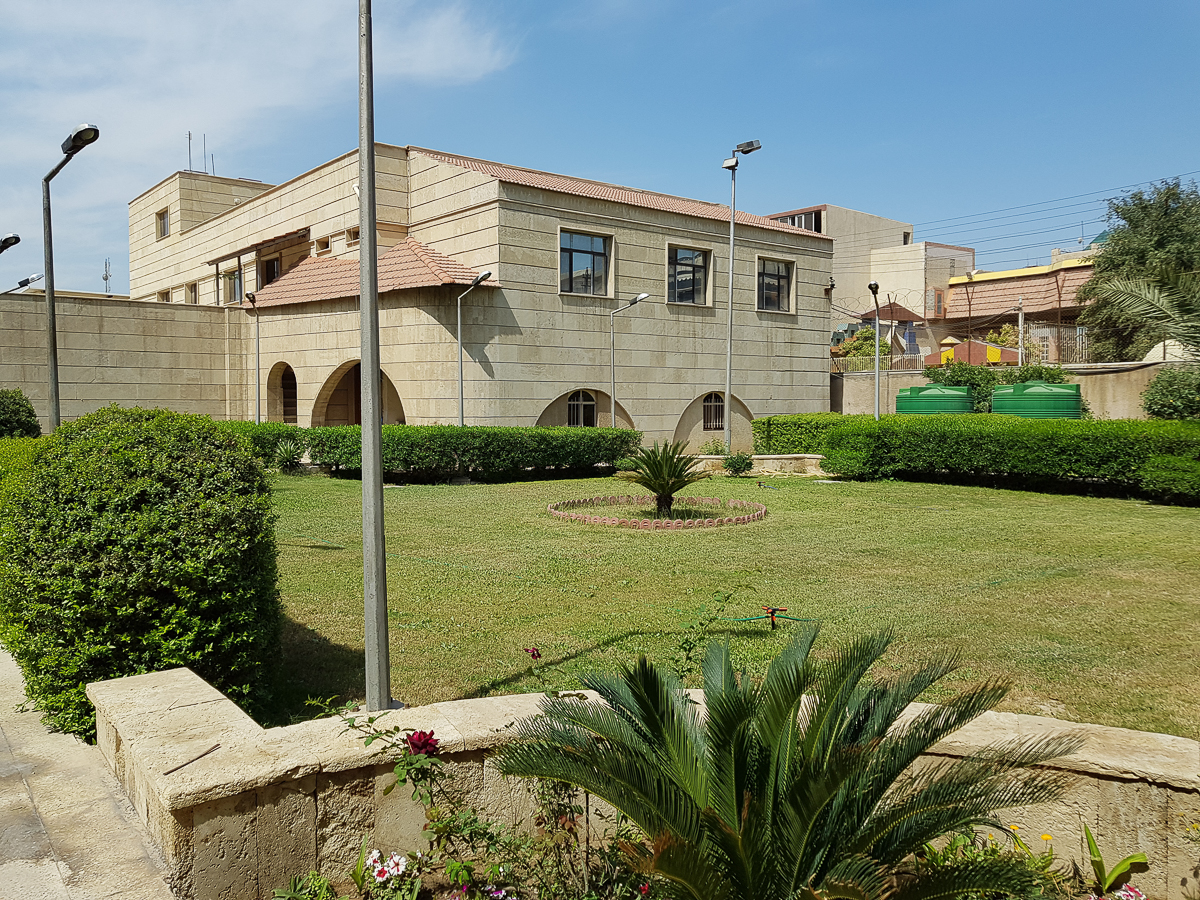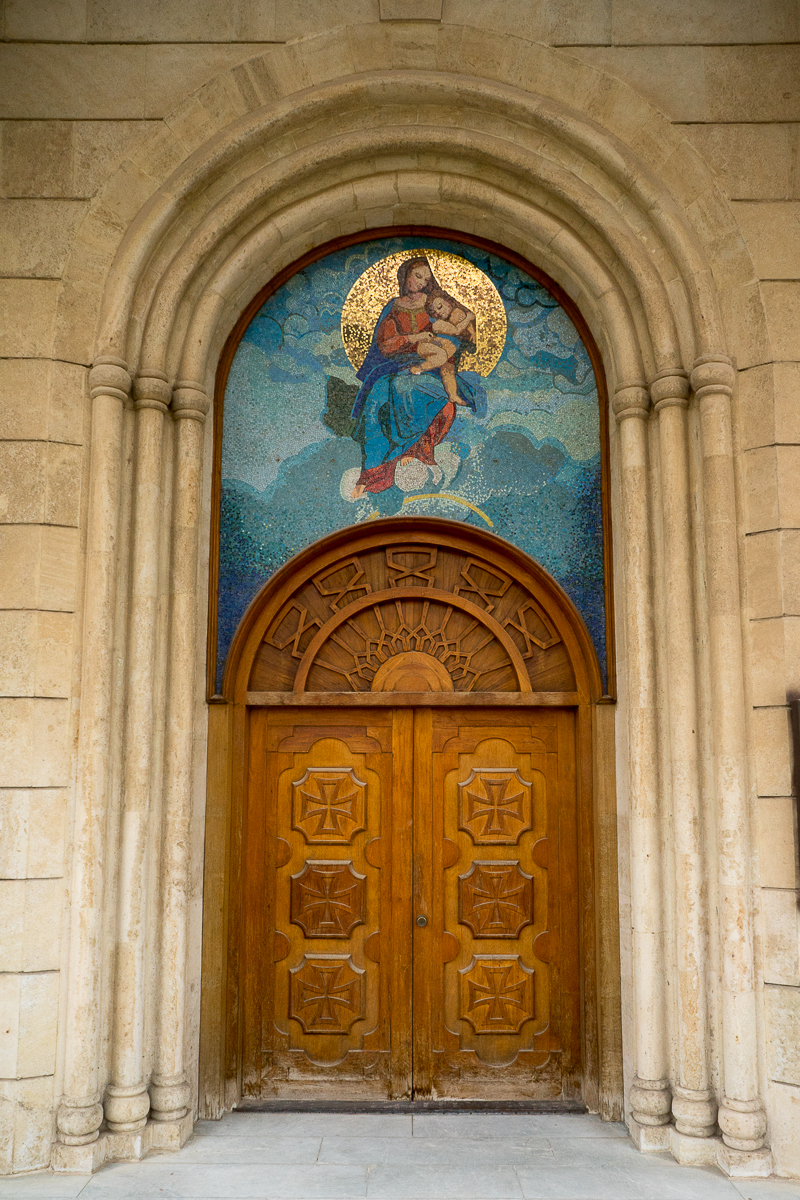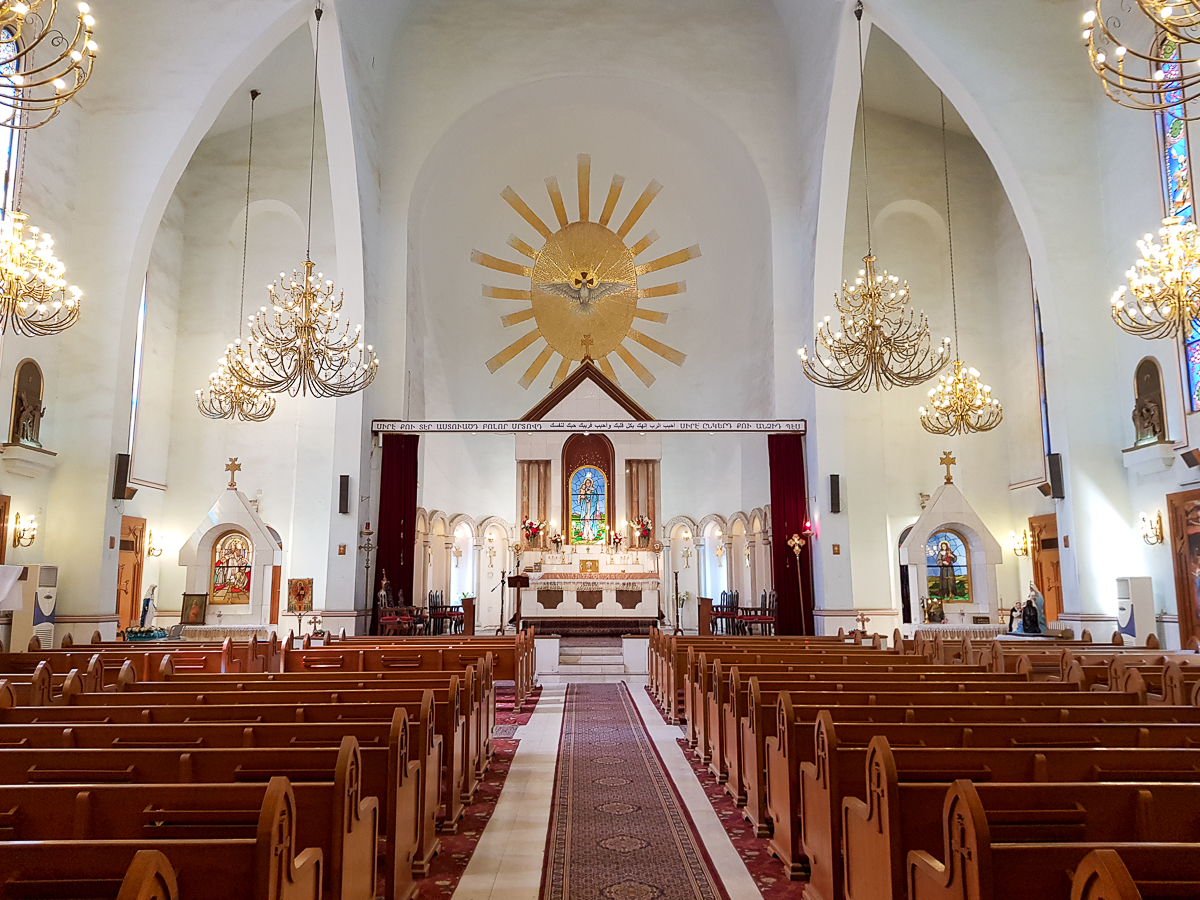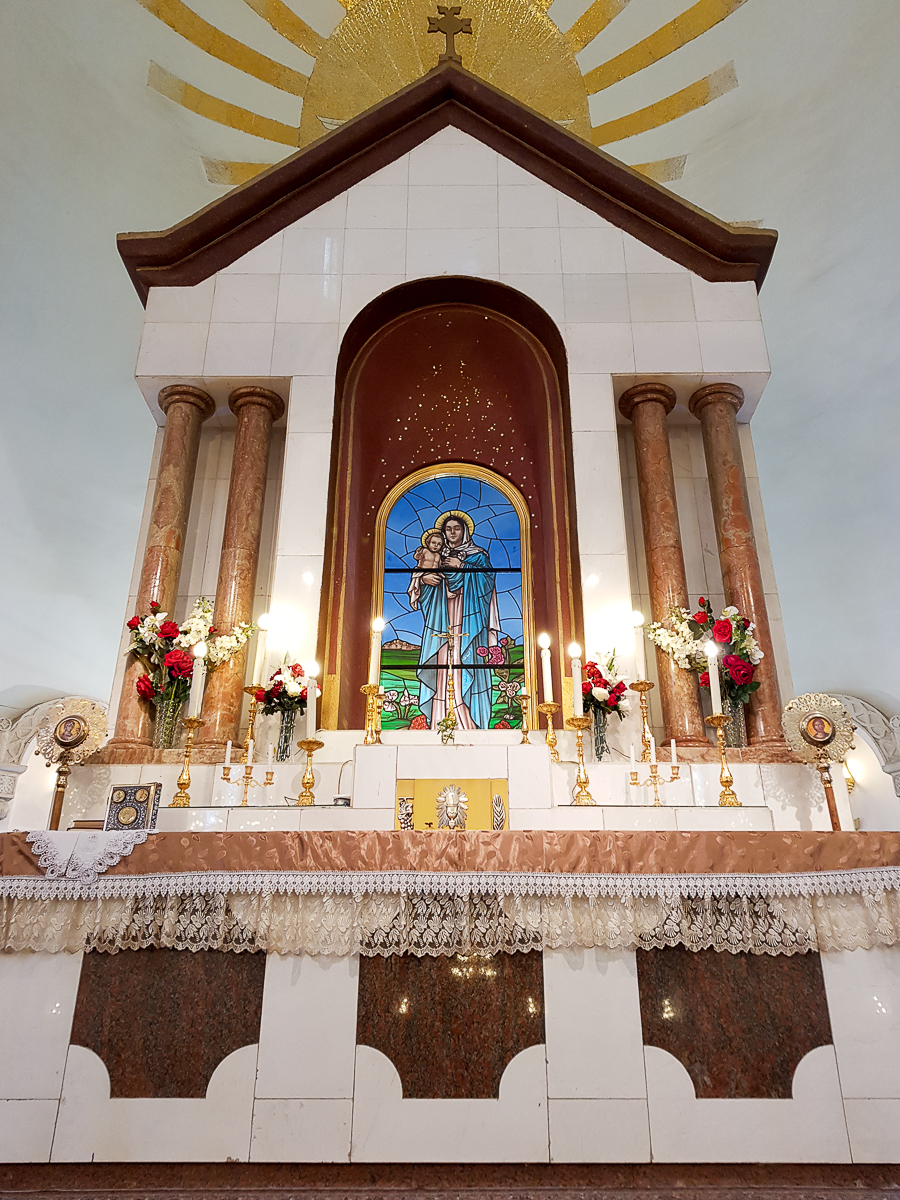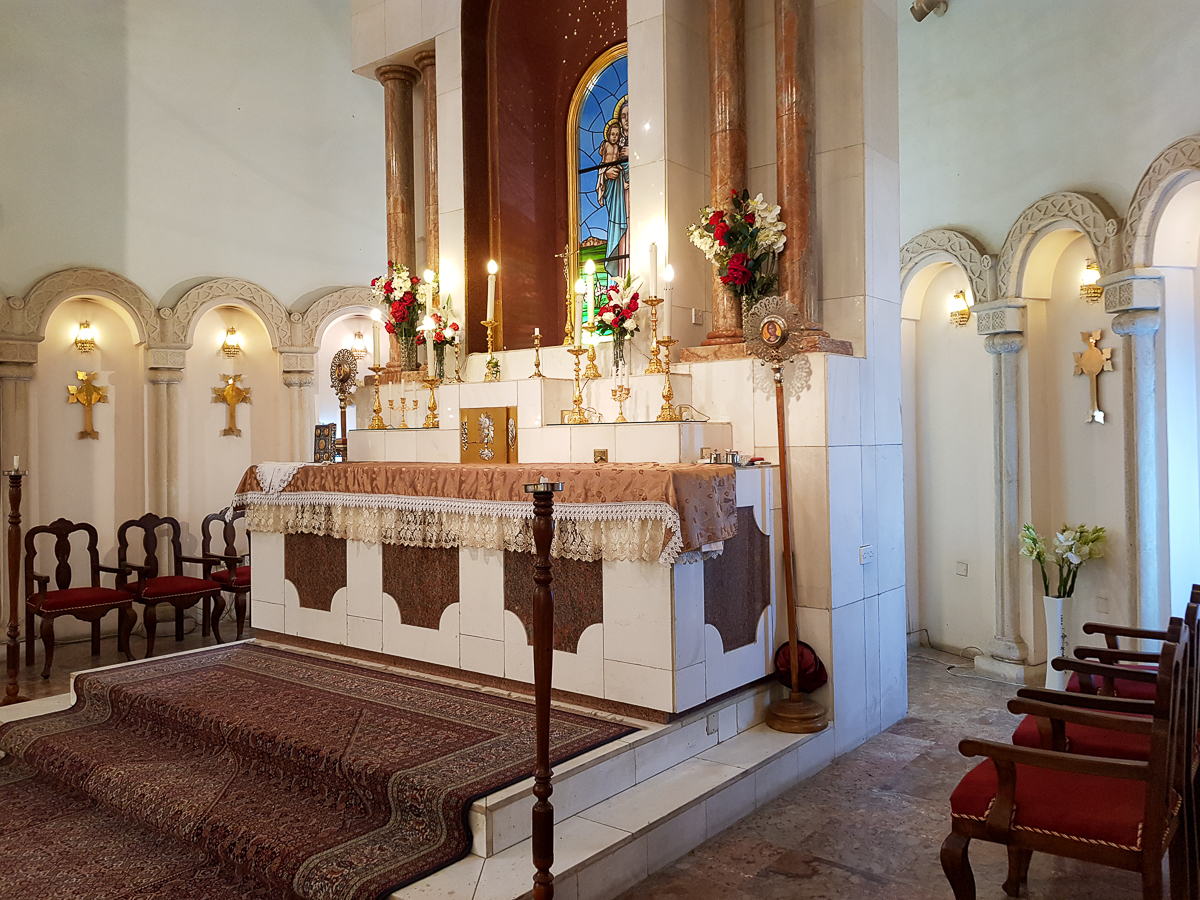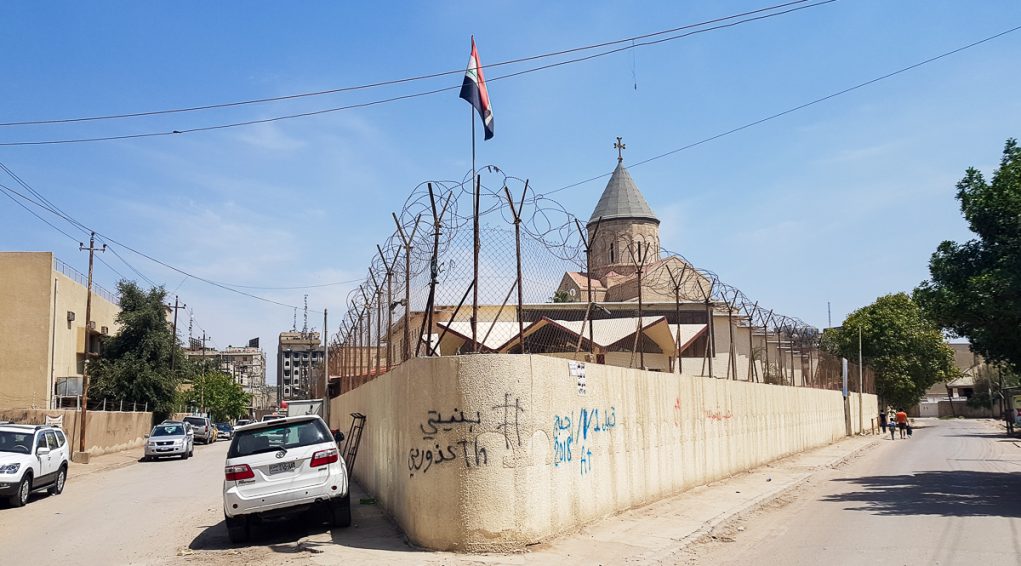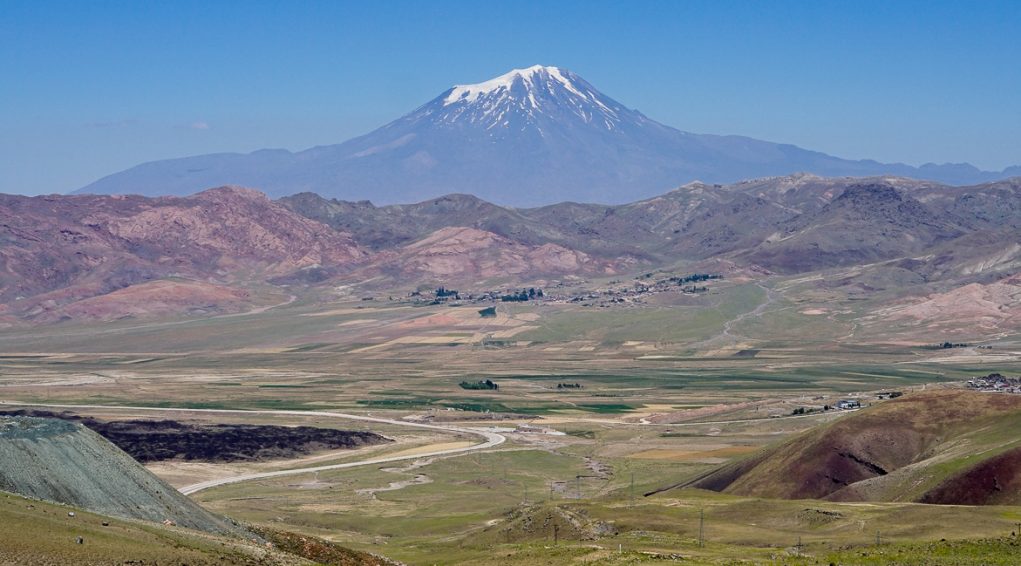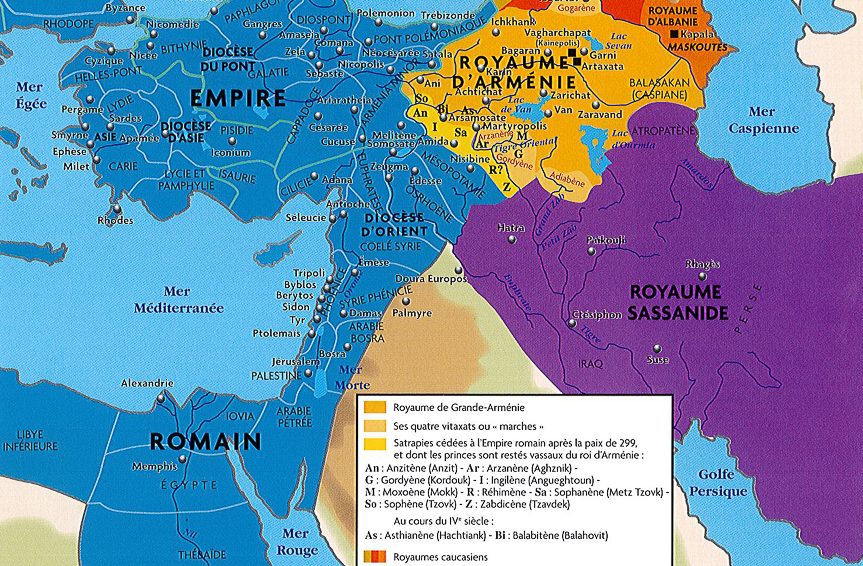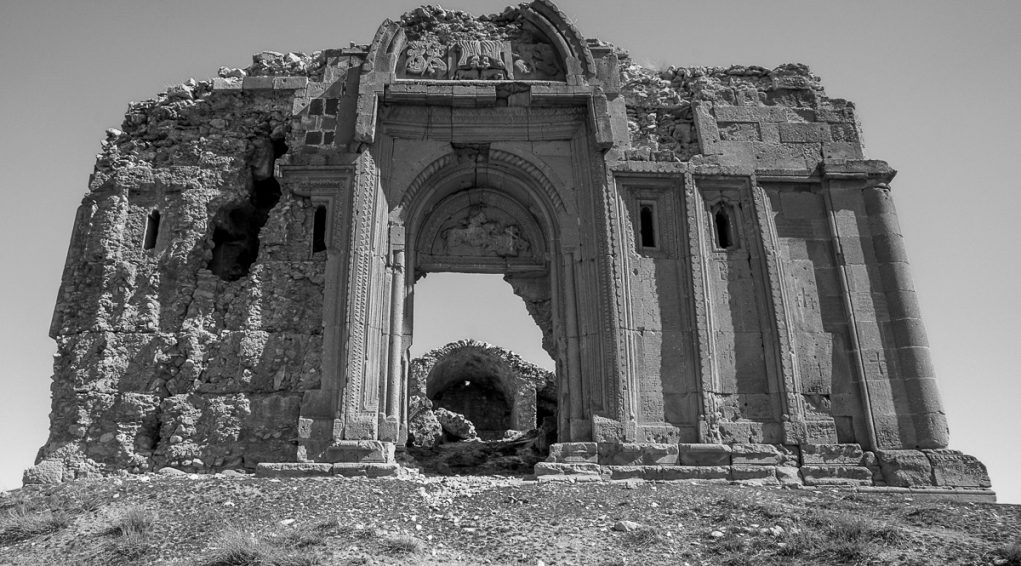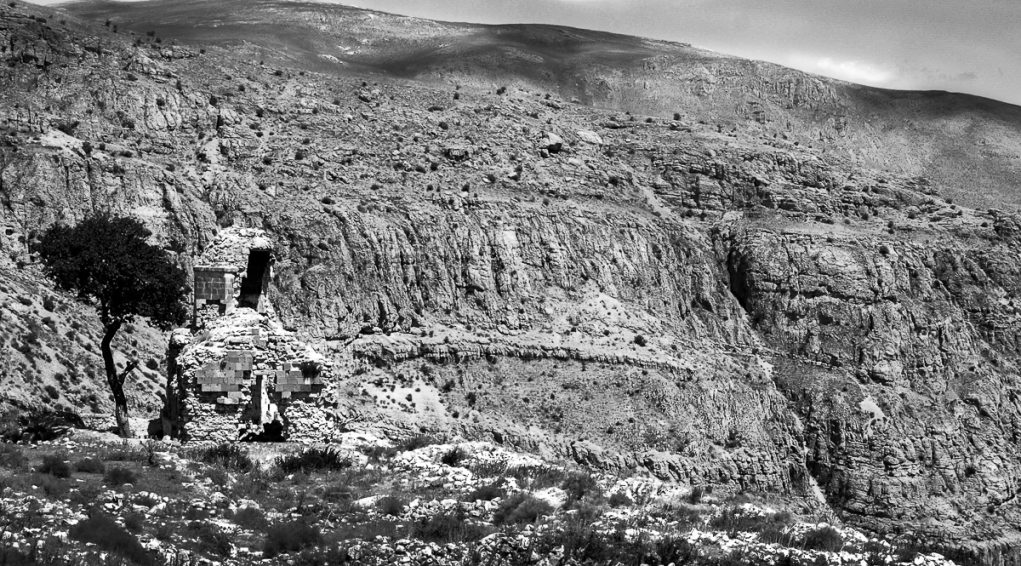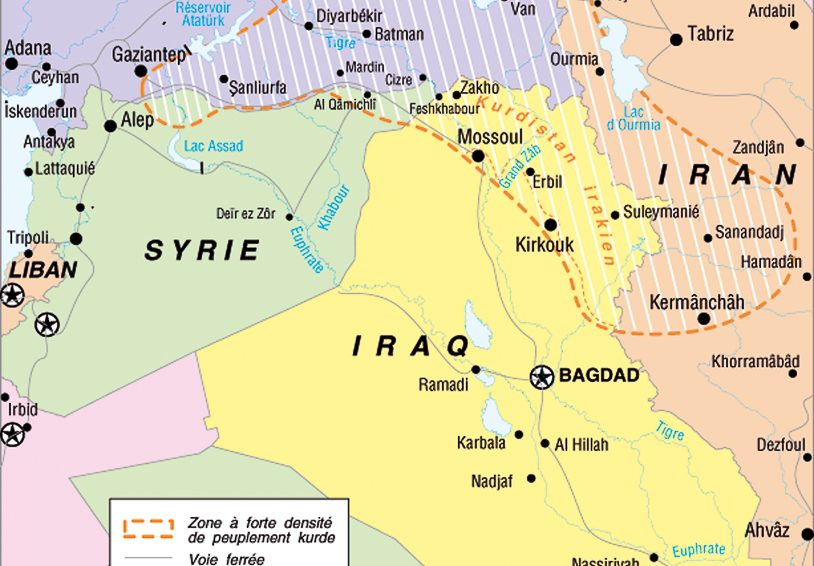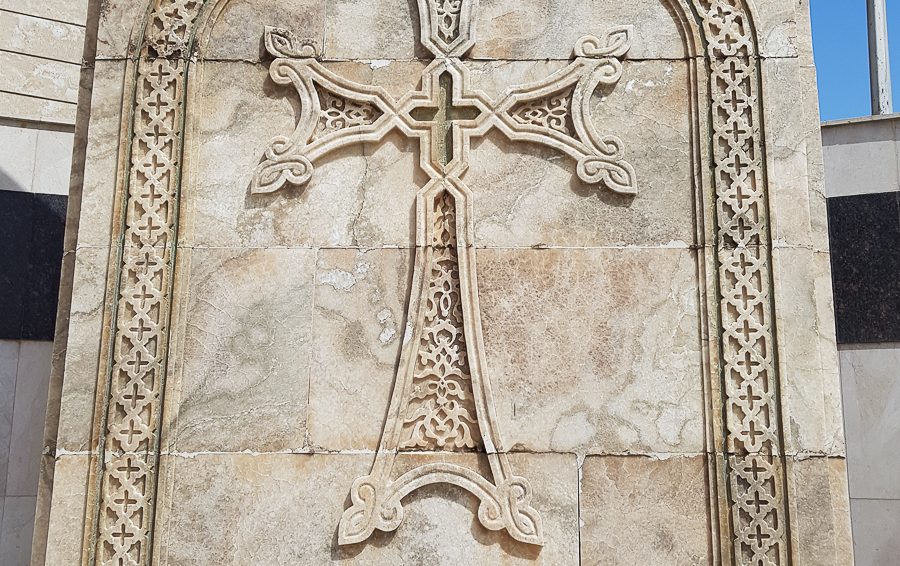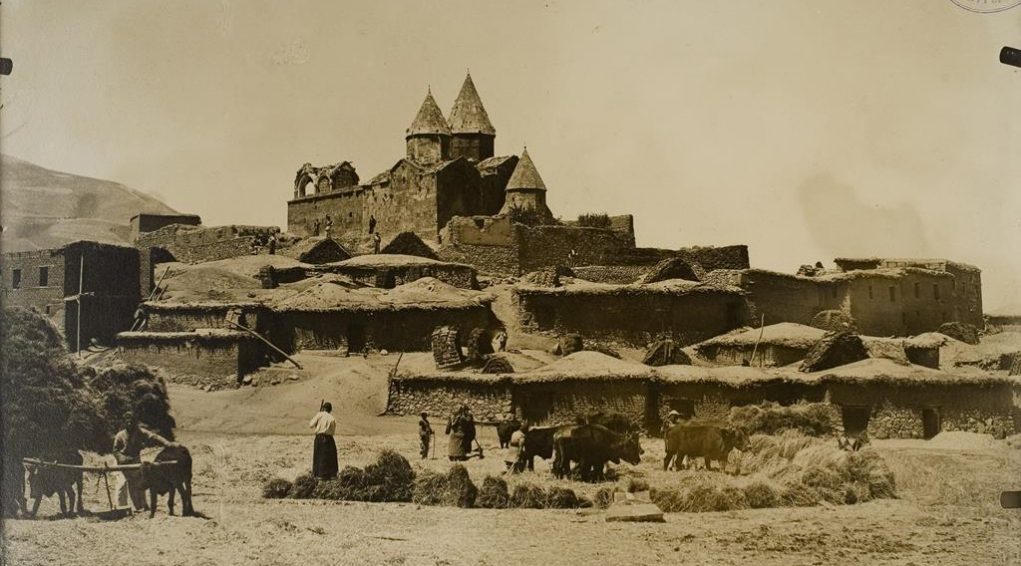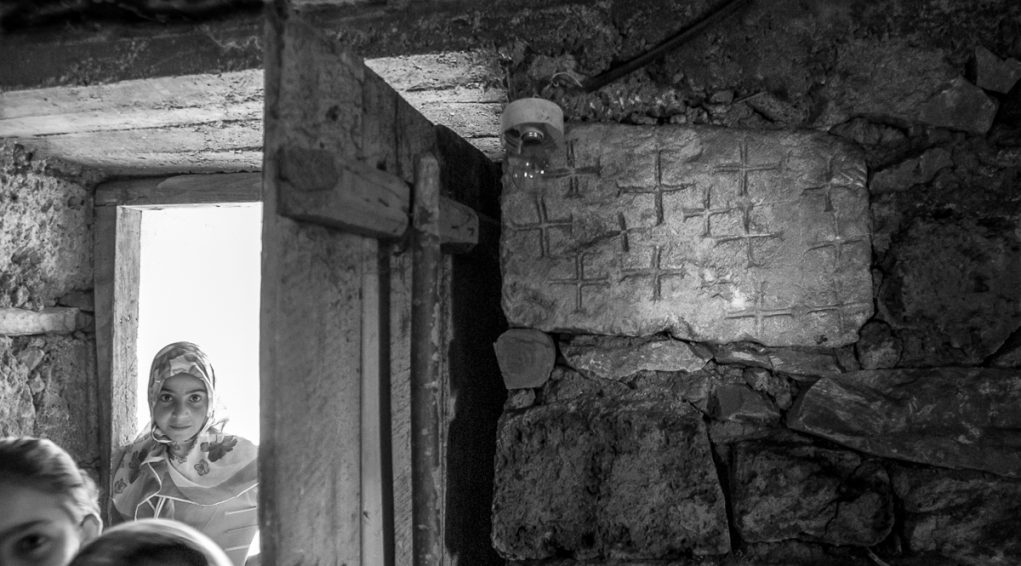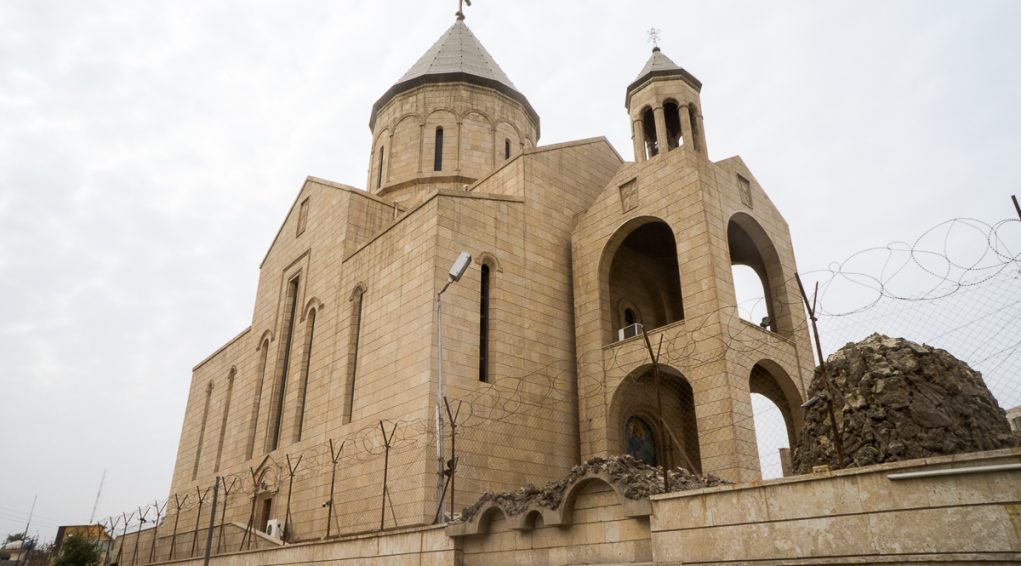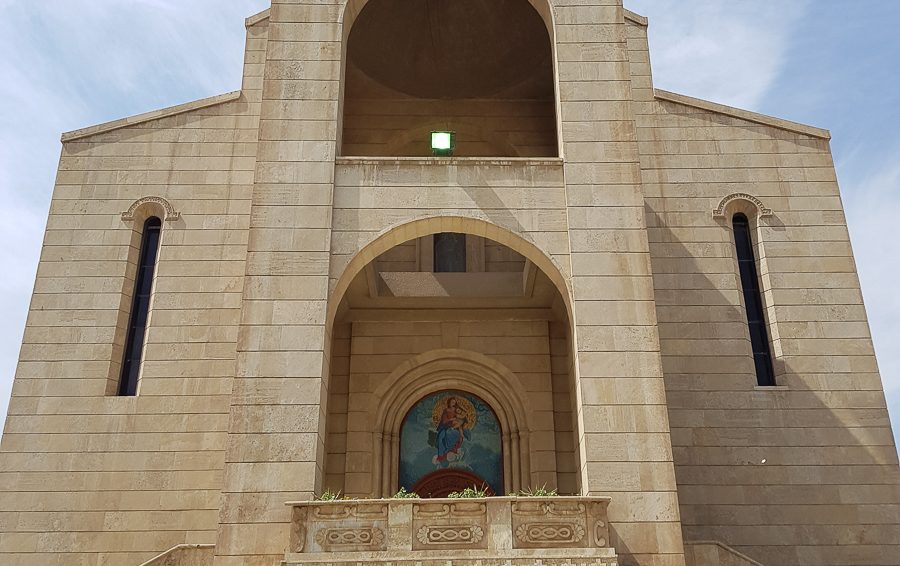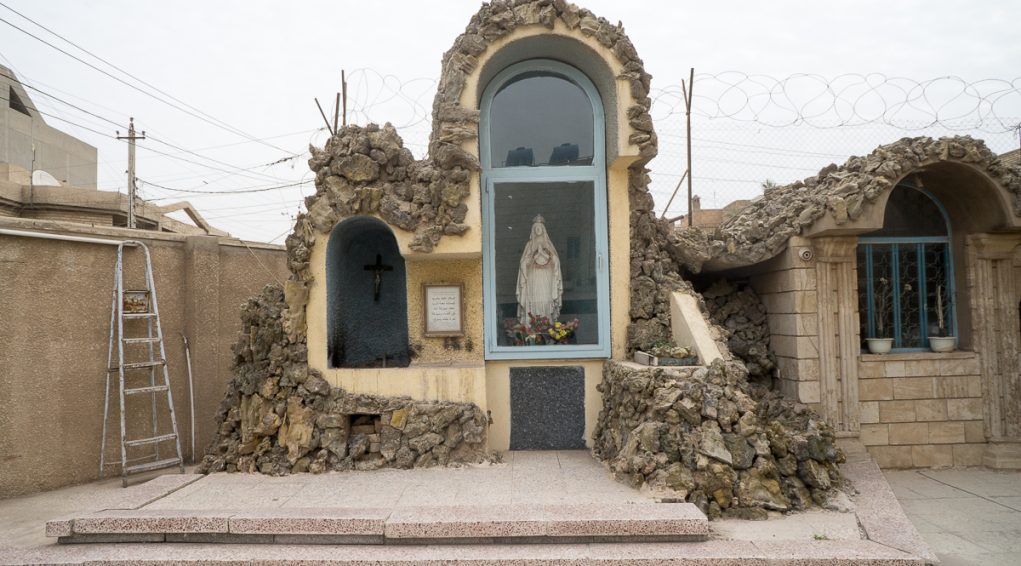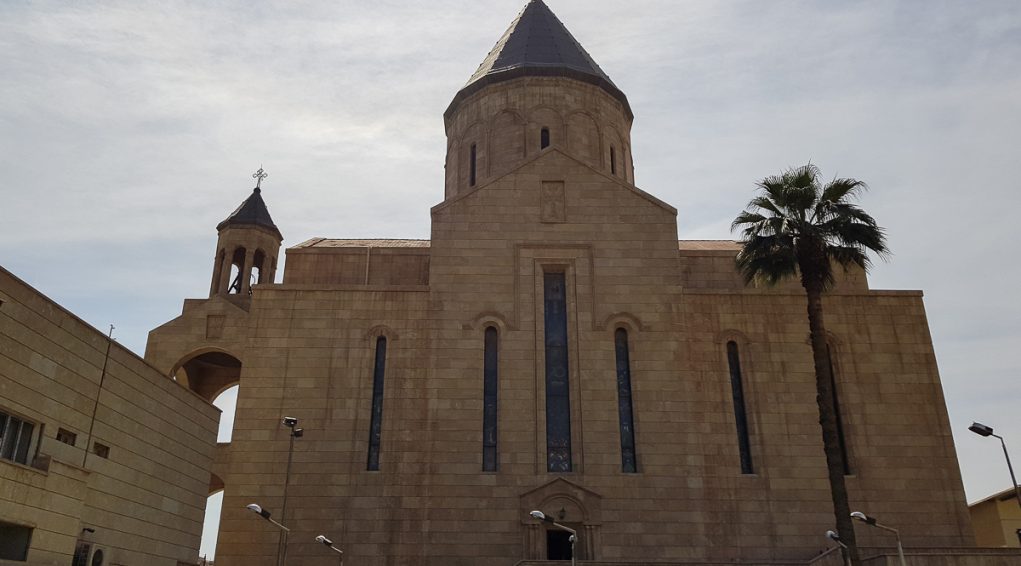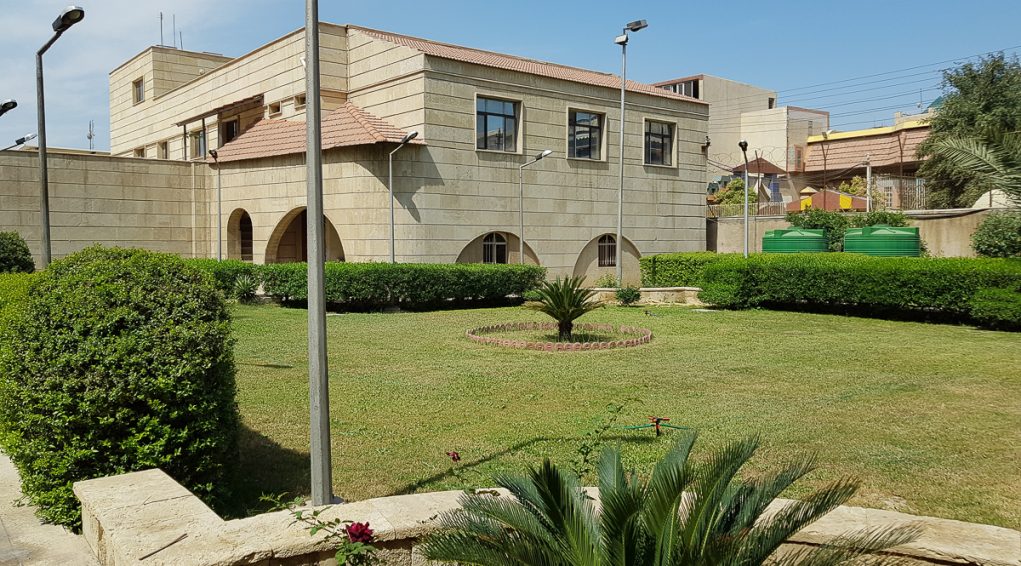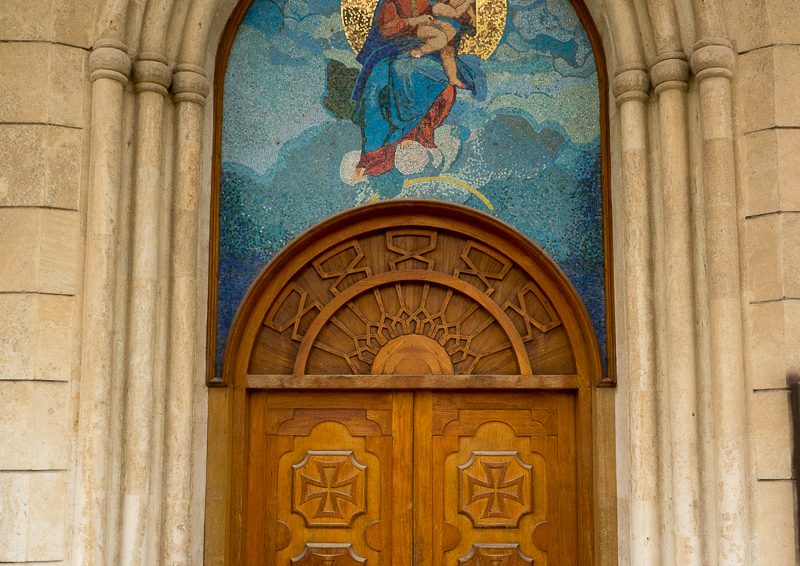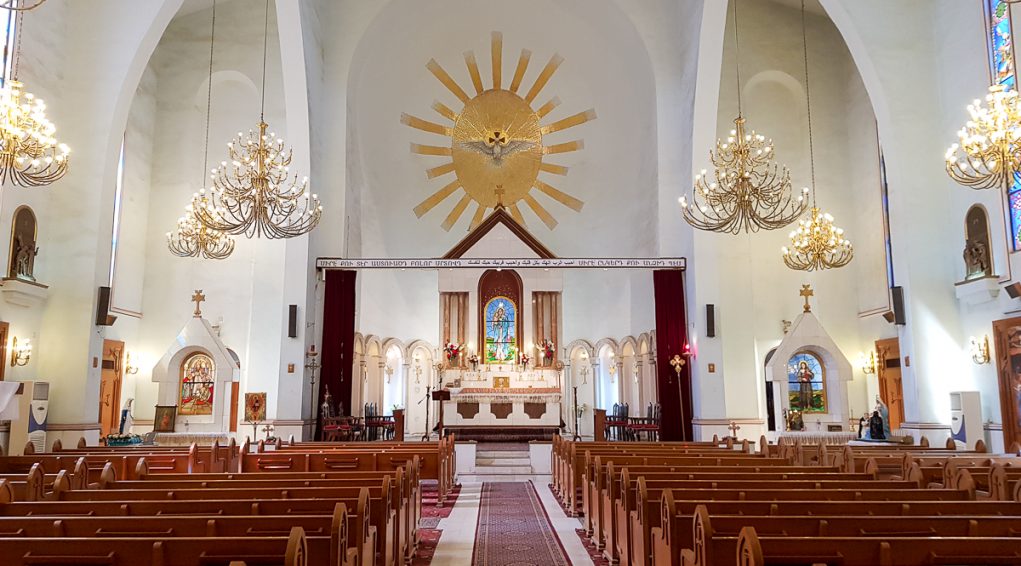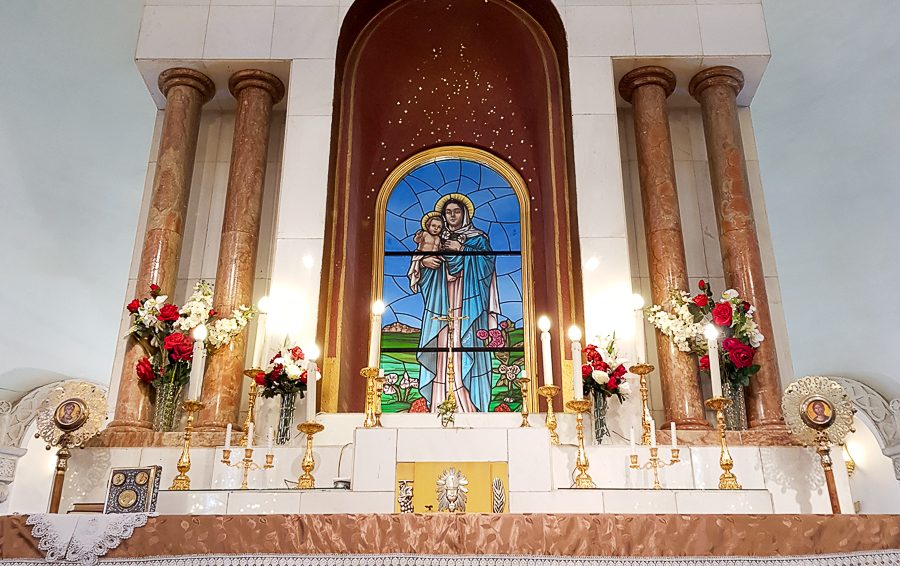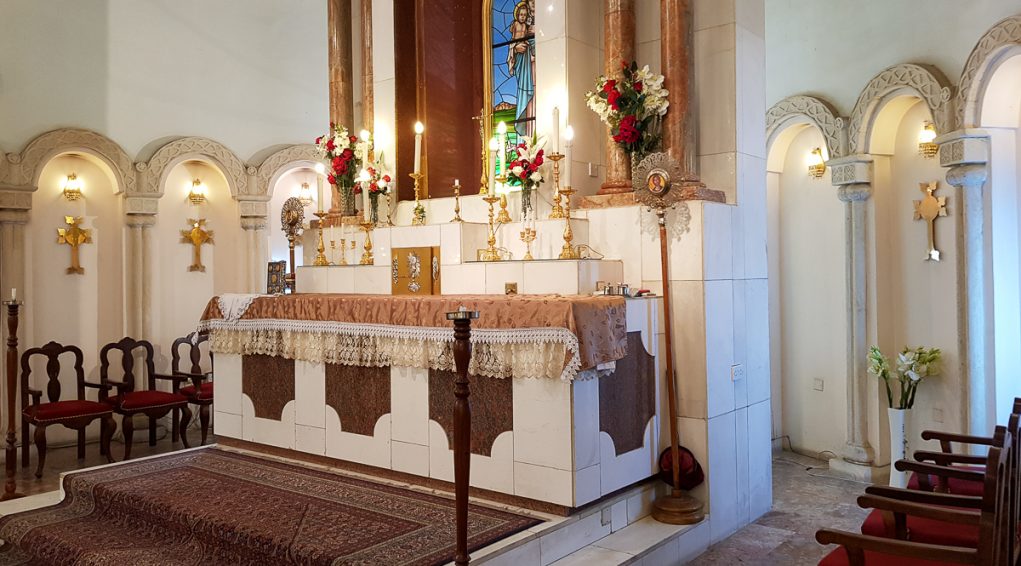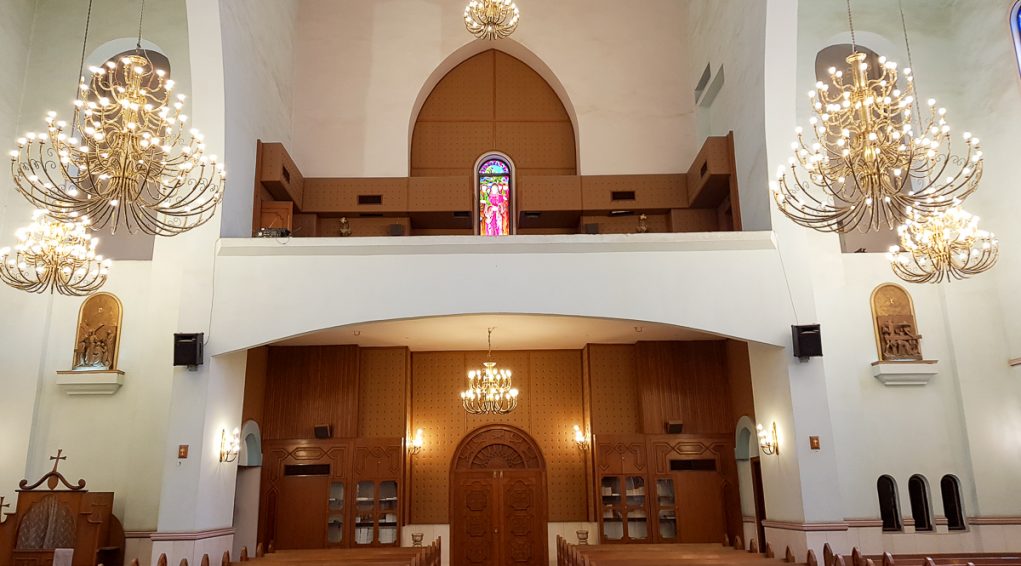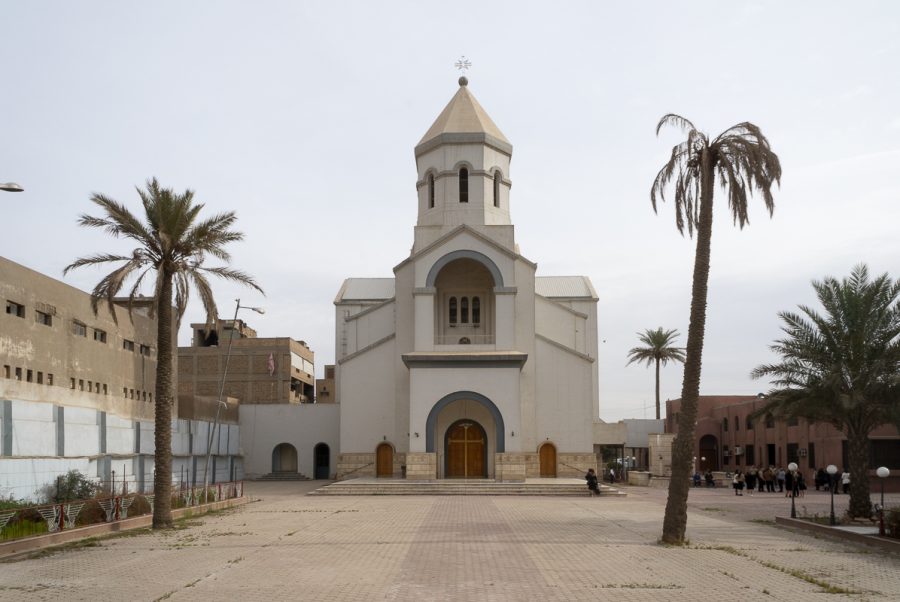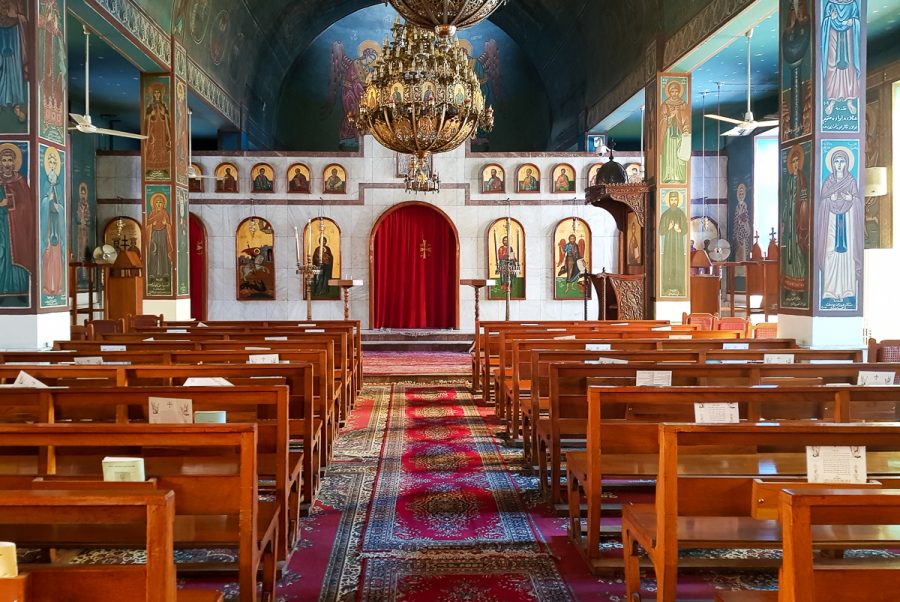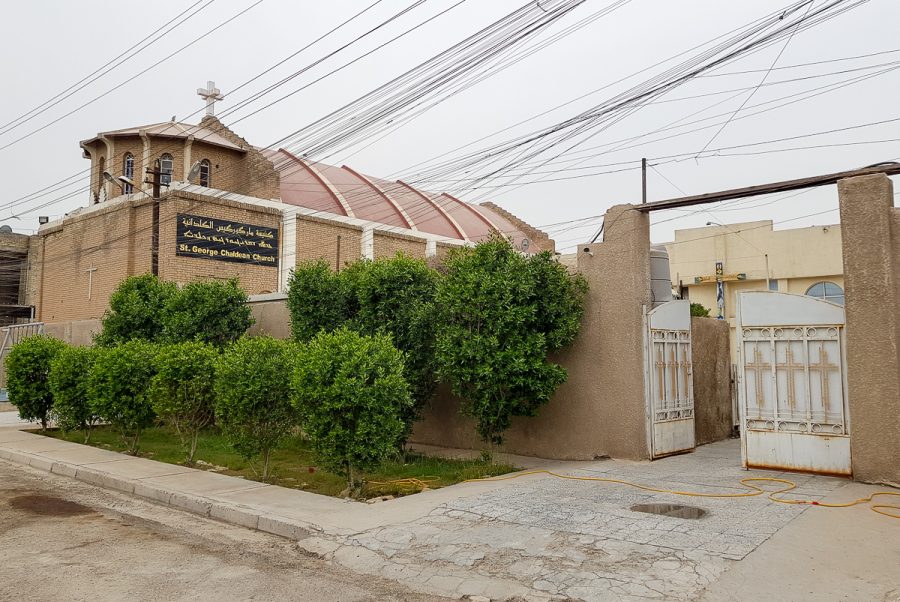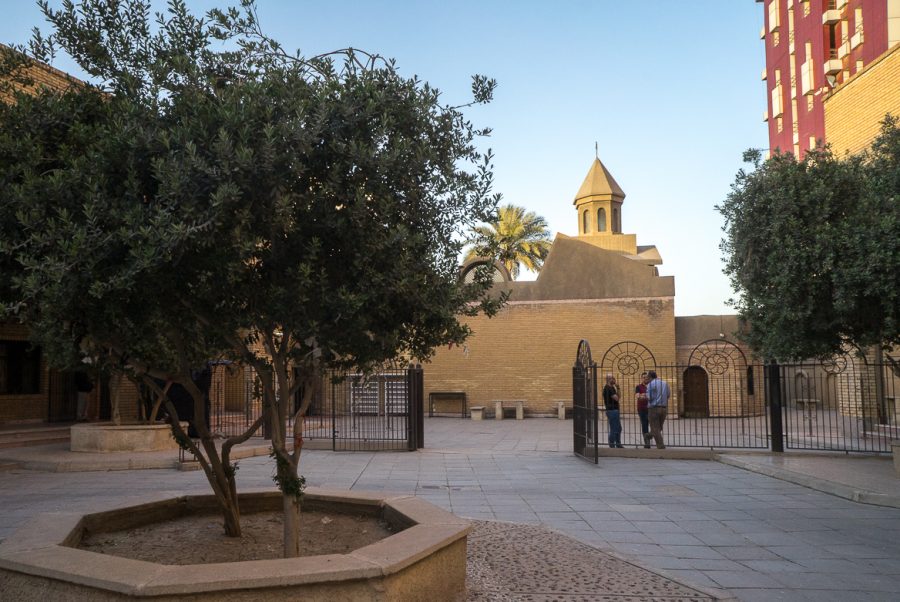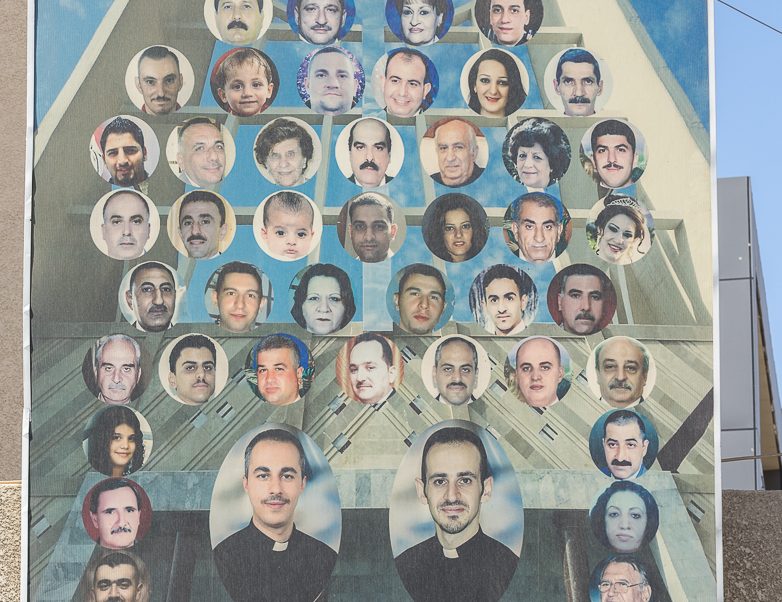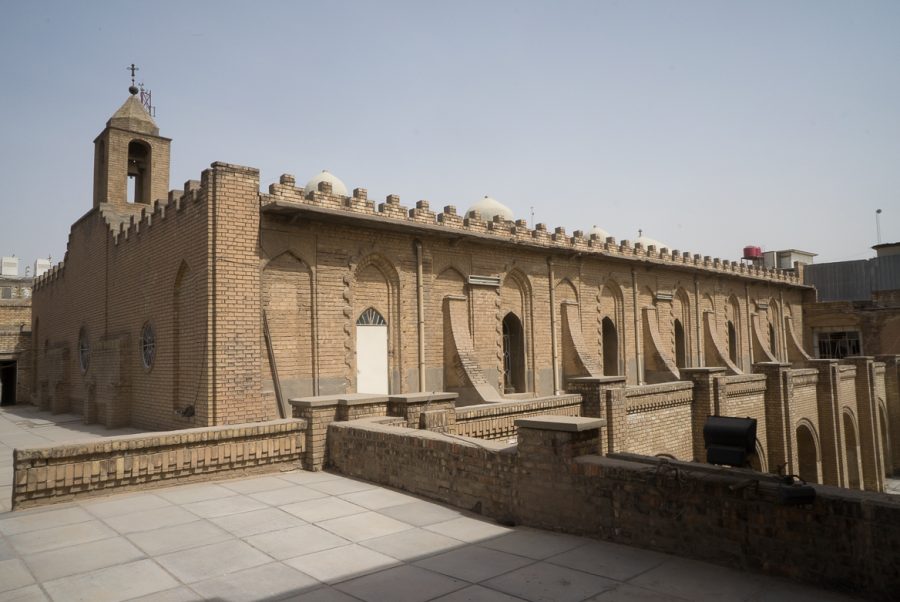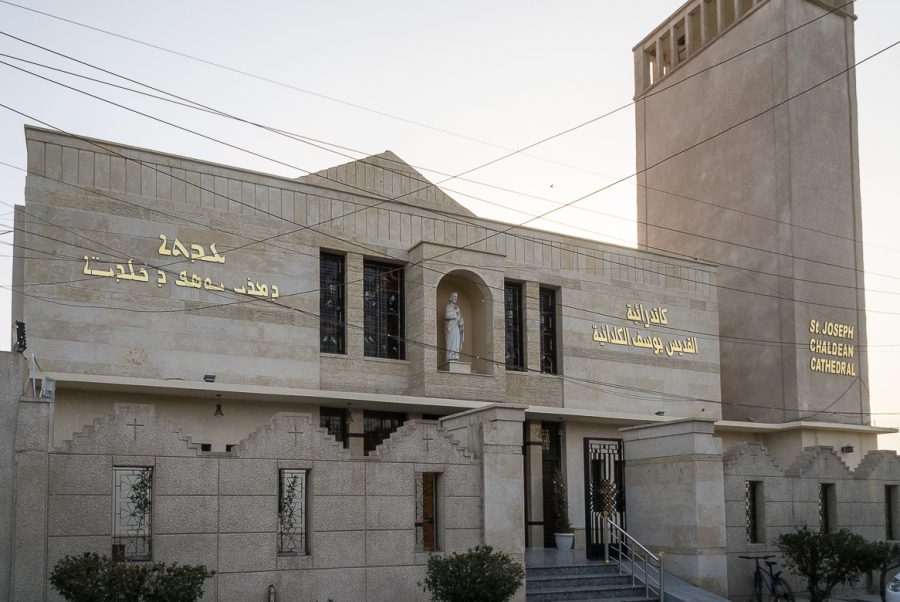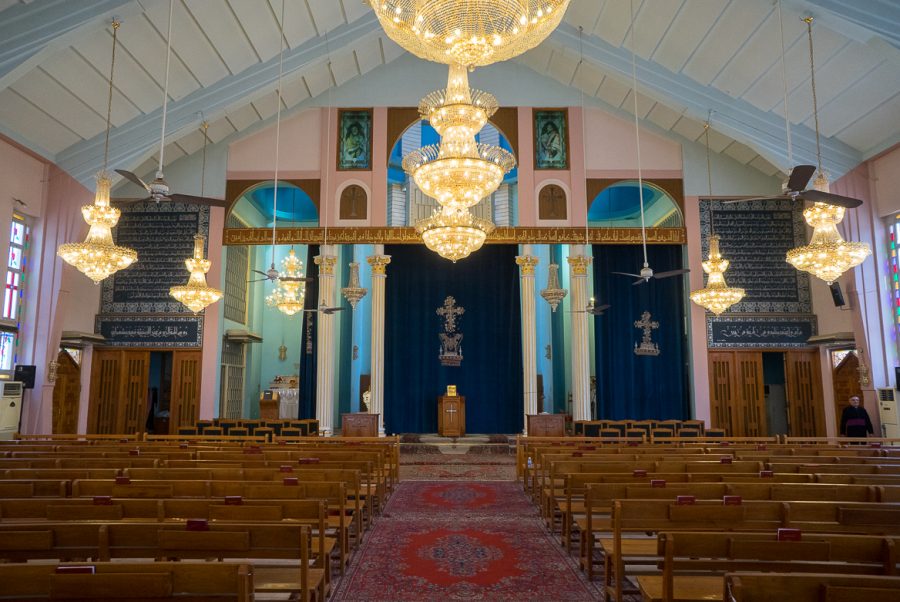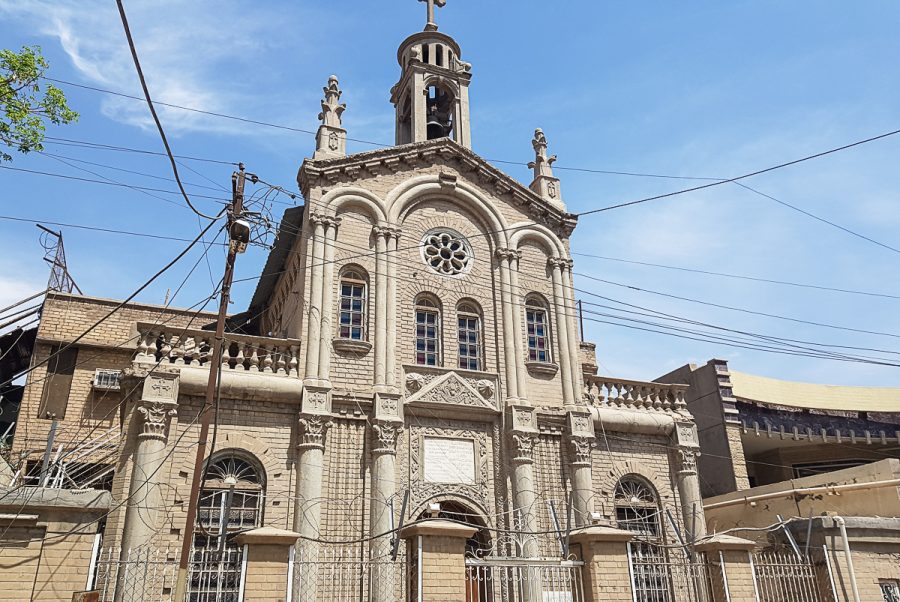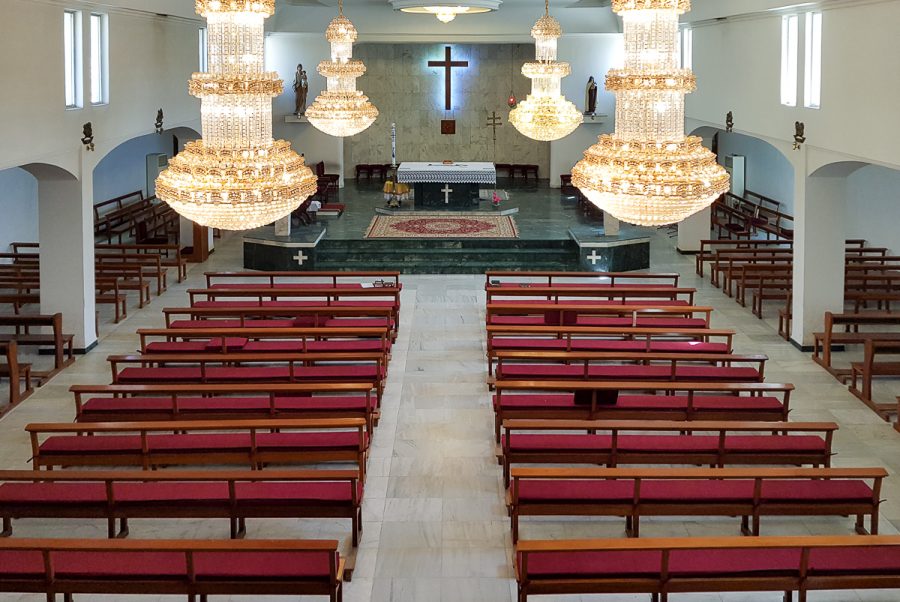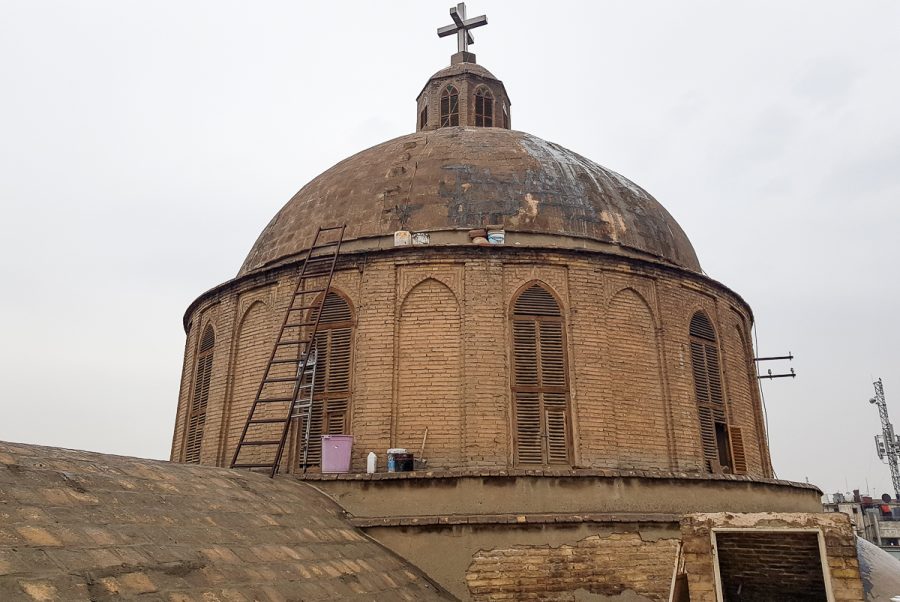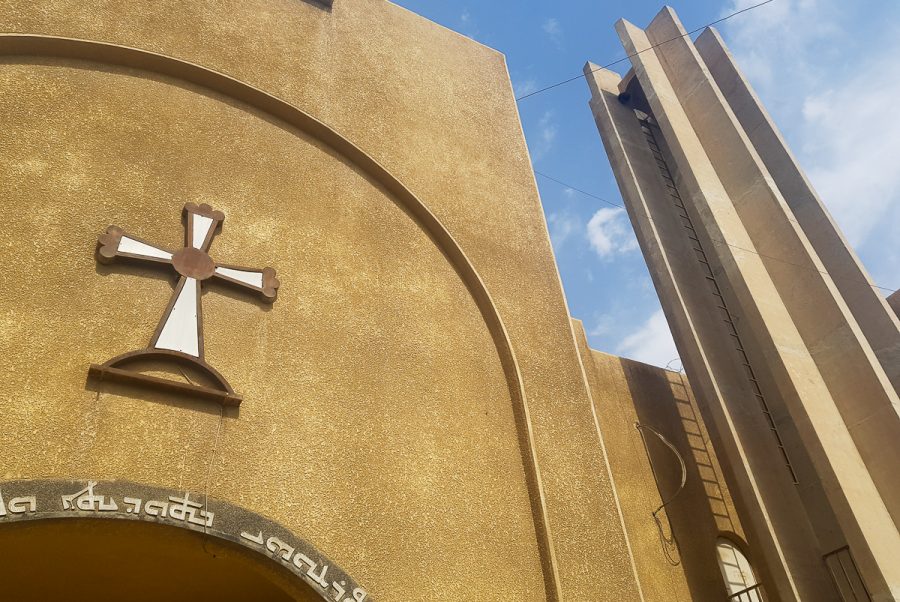The Armenian Catholic cathedral Our Lady of Narek (Our Lady of the Rosary) in Baghdad
The Armenian Catholic Cathedral of Our Lady of Narek (Our Lady of the Rosary) is located at 33°18’16.4″N 44°25’43.1″E and 39 metres altitude, in the al Karada al-sharquiya district of Baghdad, next to the national theatre.
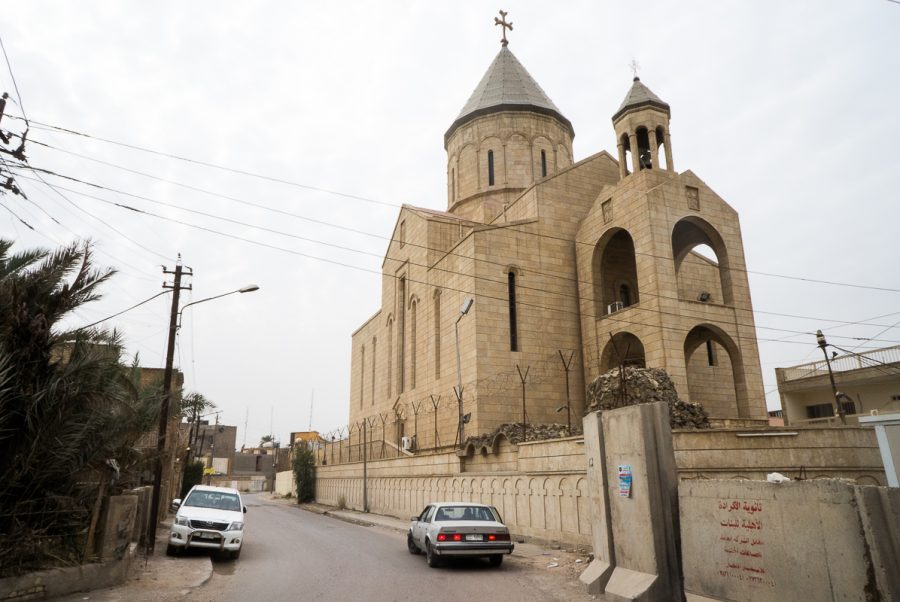
The Armenian Catholic archdiocese of Baghdad was founded on 29th June 1954 when there were several thousand Armenian Catholics living in Iraq. The Armenian Catholic church in Iraq has two churches in Baghdad: the cathedral Our Lady of Narek (Our Lady of the Rosary) and the former cathedral of the Sacred Heart of Jesus.
The Armenian Catholic Cathedral of Our Lady of Narek (Our Lady of the Rosary) was consecrated on 18th October 1998 after six years of building work. Built by an Armenian engineer from Egypt, the building is characteristic of Armenian sacred architecture.
Pic : The Armenian Catholic Cathedral Our Lady of Narek in Baghdad. February 2018 © Pascal Maguesyan / MESOPOTAMIA
Location
The Armenian Catholic Cathedral of Our Lady of Narek (Our Lady of the Rosary) is located at 33°18’16.4″N 44°25’43.1″E and 39 metres altitude, in the al Karada al-sharquiya district of Baghdad, next to the national theatre.
Origins of the Armenian presence in Iraq
The origins of an Armenian presence in Mesopotamia have come along for centuries since Antiquity. In the 1st century BC, the Adiabene kingdom (with Arbeles/Erbil as “capital city”) was part of the Armenian Kingdom of Tigranes II the Great. At the very beginning of the 4th century, the area of Abadiene, which was then the most southern territory of the kingdom of Armenia, became the very first Christian “state” in History, around 301. “There was also probably a meeting in around 328-329 between the only two Christian sovereigns at that time: the Roman Emperor Constantine 1st and the Armenian King Tiridates III. Constantine I confirmed Tiridates III’s role in evangelising the East. This led to the evangelisation of Mesopotamia and the Sassinid kingdom by Armenian missionaries, as related by the Greek historian Sozomen, in around 402: “The belief progressed amongst neighbouring peoples and grew in number, I think the Persians became Christians due to the close relationships they had with the people of Osroene[1] and the Armenians (…)”[2].
In the 17th century, new Armenian communities settled in Iraqi Mesopotamia after the Persian Shah Abbas I conquered Baghdad in 1623. In the early years of the 17th century, the Persian king forced the Armenian population of Julfa (former Armenian city in the Nakhichevan, on the northern bank of the Aras river) to exile. 12,000 Armenian people were then moved to New Julfa (Nor Djougha), at the gates of Isfahan, to take part in the development of the Safavid-Persian Empire’s new capital city. After Shah Abas died, the Armenians from Persian endured times of troubles. Lots of them moved to Mesopotamia and settled in Basra (south of modern-day Iraq), whereas others set off to India.
When the Ottoman Sultan Murad IV regained control over Baghdad in 1638 with the help of Armenian Ottoman soldiers and a new phase started for an Armenian settling in Baghdad. All along the Ottoman domination’s period and until the fall of the Empire at the beginning of the 20th century, the Armenians developed their institutions so much that by the end of the 19th century they were nearly 90,000 living in Iraq[3].
The genocide of the Armenians in the Ottoman Empire in 1915-17 was the last and terrible reason of their migration towards Iraqi Mesopotamia. Deported from the eastern provinces of the Empire, coming from the North (Diyarbekir) along the Tigris river, from the West (Ras-al-Ain) along the railway from Aleppo to Baghdad, or also from Van and then coming first through Persia, the Armenians arrived in some relegation areas such as Zakho, Havresk, Avzrok but also Kirkurk, Bakouba and Mosul. At this time a particularly tragic incident took place. In January 1916 over just two nights, 15,000 Armenian deportees living in Mosul and the surrouding area were exterminated, tied together in groups of ten and thrown into the Tigris river. Already, well before this carnage, on 10th June 1915, the German consul to Mosul, Holstein, telegraphed his Ambassador, reporting telling scenes
“614 Armenians (men, women and children) expulsed from Diarbekyr and transported to Mosul, were all killed en route, as they were transported by raft (on the Tigris). The kelek arrived empty yesterday. For a few days now the river has been carrying corpses and human limbs (…)” [4]
Nowadays, the Armenians in Iraq mostly descend from people who survived the 1915 genocide. Rather discreet on the political scene, they were known for being loyal and developed their own educational, social and religious infrastructure.
From a religious point of view, the Armenians from Iraq are mostly members of the Armenian Apostolic Church (autocephalous church since its origin in 301), some are members of the Catholic community and some others joined a small evangelic community.
After Saddam Hussein’s regime fell in 2003, the situation worsened considerably. The attacks from Islamic and Mafia groups against Iraqi Christians also targeted the Armenians and their churches. On August 1st 2004, the Armenian Catholic church Our Lady of the Rosary, in Baghdad, Karada district, was struck by a bomb attack. An Armenian church under construction was also targeted on December 4th 2004. For nearly 20 years, these successive spates of violence set the tempo for Iraqi Armenians’ mass exodus. The battle of Mosul over the summer 2017 and the bombing intensity also affected the Armenian heritage. Before 2003, there were probably more than 25,000 Armenians in Iraq, whereas today the community leaders assert there are 10,000 to 13,000 Armenians still living in Iraq. Half of them are said to be living in Baghdad. The remainder live in Iraqi Kurdistan, Kirkuk, Sulaymaniyah, as well as Basra. There are no more Armenians in Mosul.
_______
[1] The people of Osroene were the inhabitants of Edessa. Edessa was a major capital city in ancient times, before becoming a powerhouse of Christianity during its infancy. Armenian tradition recounts that the King of Edessa and Armenia, Abgar V, wanted to welcome Christ to his Kingdom and issued an invitation. It was not Christ who came to Edessa but one of his apostles Thaddeus (Jude). Edessa was renamed Urfa and remained the capital of the principality. This city has been known as Şanlıurfa since 1984 (in Turkey).
[2] In “Arménie, un atlas historique”, p.22 and map p.23. Publisher Sources d’Arménie, 2017.
[3] Source: Armenian Embassy in Iraq
[4] In “L’extermination des déportés arméniens ottomans dans les camps de concentration de Syrie-Mésopotamie”. Special edition of Revue d’Histoire Arménienne Contemporaine, Tome II, 1998. Raymond H.Kevorkian. p.15
The Armenian Catholics in Iraq: demographics and organisation
In 1914, there were 300 Armenian Catholics in Iraq. Between the end of the first world war and the fall of the Baathist regime in 2003, the Armenian Catholic community had grown to 3,000 members[1]. Since this time numbers have dwindled due to the poor security situation and anti-Christian persecution. In 2012, there were 1,650 baptised Armenian Catholics in Iraq (Baghdad)[2].
The Armenian Catholic archdiocese of Baghdad was founded on 29th June 1954 when there were several thousand Armenian Catholics living in Iraq. The archdiocese is governed by the Armenian Catholic Patriarchate of Cilicia, the seat of which is in Bzoummar in Lebanon.
The Armenian Catholic church in Iraq has two churches in Baghdad: the cathedral Our Lady of Narek (Our Lady of the Rosary) and the former cathedral of the Sacred Heart of Jesus.
The position of Primate of the Armenian Catholics in Iraq has been vacant since the death of Archbishop Emmanuel Dabbaghian, on 13th September 2018.
_______
[1] Source: Armenian Embassy in Iraq
[2] Source: http://boowiki.info/art/dioceses-catholiques-en-irak/archieparchie-de-bagdad-des-armeniens.html#goto-2
History of the Armenian Catholic Cathedral of Our Lady of Narek (Our Lady of the Rosary) in Baghdad
The Armenian Catholic Cathedral of Our Lady of Narek was consecrated in 1998. It is named after the Armenian saint who lived around the year 1000, Gregory of Narek. It is also dedicated to Our Lady of the Rosary.
The decision was taken to build the church due to the growth of the Armenian Catholic community in Baghdad, which previously worshipped in the cathedral church of the Sacred Heart of Jesus (see file).
The construction of the cathedral was instigated by the Armenian Catholic Patriarch of Cilicia, Hovhannes Bedros XVIII Kasparian (1982-1998), former Archbishop of Baghdad (1973–1982). He laid the first stone of the building which was overseen by the Armenian Catholic Archbishop Paul Coussa (1983-2001) who travelled the world over to raise the necessary funds for the project.
The work began in 1992, two years after the inauguration of a community centre above which the cathedral was raised. The new cathedral was inaugurated on 18th October 1998, in the presence of the Armenian Catholic Patriarch Hovhannes Bedros XVIII Kasparian, one month before he retired. The apostolic nuncio in Iraq, as well as numerous priests, monks, nuns, lay people and worshippers from all denominations took part in this event.
After the fall of the Baathist regime in 2003, attacks against churches in Baghdad began to increase. The cathedral Our Lady of Narek (Our Lady of the Rosary) was targeted by an attack on 1st August 2004. Despite the insecurity, the cathedral has remained a focus of community life. The services and religious and social activities held here never stopped.
Who was Saint Gregory of Narek?
Saint Gregory was born in the village of Narek at some point between 945 and 950 and died between 1003 and 1010. A typical rural Armenian village, 2 kilometres to the south of Lake Van, the village of Narek was occupied by the Kurds as of the genocide of the Armenians in 1915-1917. The village of Saint Gregory of Narek was transformed. It has been known as Yemiçlik since 1934.
Saint Gregory of Narek was a renowned 10th century Armenian monk and priest as well as a mystical poet whose work in the Armenian language has endured throughout the centuries and across geographical borders. Author of odes, hymns, panegyric, litanies and meditations, he is best known for the memorable Book of Lamentations widely acknowledged as a masterpiece of universal Christian literature.
He was appointed 36th doctor of the church by Pope Francis on Sunday 12th April 2015 at St. Peter’s Basilica in Rome, before Armenian Catholic worshippers, during the commemoration of the centenary anniversary of the Armenian genocide. “Of the 36 doctors of the church, Gregory of Narek is the second from the East (who did not speak Greek or Latin and lived beyond the borders of the Byzantine empire), after Saint Ephrem the Syrian. It was very important as part of the new, albeit delayed, awareness of the situation of the Christians of the East, that in this year at least – 2015 – another person from the East be made a Doctor of the Church.” [1]
The Narek monastery where Saint Gregory resided and was buried “remained, up until the 20th century a very popular pilgrimage site.[2]” This major monastery was pillaged in 1895 during the Hamidian massacres. During the 1915 genocide, the 123 Armenian families in the village were wiped out. The monastery in Narek was razed to the ground on the orders of the Turkish authorities. A mosque was built in its place.
Celebrated by the Armenian Apostolic Church on the second Saturday in October, in the Catholic church the feast day of Saint Gregory of Narek is celebrated on 27th February.
________
[1] Jean-Pierre Mahé, member of the Institute and translator of the works of Saint Gregory.Read “Trésor des fêtes, hymnes et odes de Grégoire de Narek”.Published by Peeters. 2014.
[2] Source: Union Internationale des Organisations Terre et Culture.
Description of the Armenian Catholic Cathedral of Our Lady of Narek (Our Lady of the Rosary) in Baghdad
The Armenian Catholic Cathedral of Our Lady of Narek (Our Lady of the Rosary) stands within a religious estate, closed off by a high perimeter wall complete with barbed wire.
Built by an Armenian engineer from Egypt, the building faces East and is characteristic of Armenian sacred architecture. Solid yet elegant, built of reinforced concrete, the cathedral is entirely covered in ochre and beige facing stones. It has a free-cruciform (the arms of the cross are visible from the outside) and longitudinal layout (the east-west axis of the cross is longer than the north-south axis). Its circular cupola is formed from a drum with windows and a pyramid roof mounted with a metal Armenian cross. The high clerestory windows and stained-glass windows break up the north and south facades and allow in the light. There are two side doors on these facades. Above the south door, inside the church hangs a painting of Gregory of Narek, the patron saint of the cathedral.
The west entrance to the cathedral is preceded by a three-floor large bell tower porch, with a lantern, mounted with a metal Armenian cross. After passing through this door, a large tribune overlooks the sanctuary which is mounted with a large wall painting symbolising the power of the Holy Spirit. A way of the cross with stations sculpted in haut-relief weaves around the nave tower. The Holy of Holies, exclusively reserved for priests and deacons forms a high tribune. A double red velvet curtain closes off this bem, where a high altar with steps stands, an imitation of a church facade with columns. Behind this, an ambulatory runs alongside the semi-circular apse perforated with false columned windows and semi-circular arches. In addition to the high altar, at the foot of the bem, to the left and right in front of the doors of the baptistery and sacristy, are two side altars in the form of church facades with stained-glass windows. The altar to the right is dedicated to Saint Rita, patron saint of impossible causes. The altar to the left is dedicated to Saint Gregory the Illuminator, founder and first Catholicos of the Armenian national church in the year 301.
Around the cathedral: In front of the western facade of the church, to the right is a khatckar (a finely sculpted Armenian stone cross) commemorating the martyrs of the 1915 Armenian genocide. To the left of the facade is a stylised reproduction of the shrine in Lourdes with an encased statue of the Virgin Mary.
Around the cathedral: The large plot of land on which the cathedral is built includes a number of other buildings. This includes the Armenian Catholic archdiocese. There are also two rooms for religious and social activities. The first is named after the Holy Family. The second under the cathedral is named after the benefactor, Abikian. There is also a creche, a room for catechism and a school.
Monument's gallery
Monuments
Nearby
Help us preserve the monuments' memory
Family pictures, videos, records, share your documents to make the site live!
I contribute
